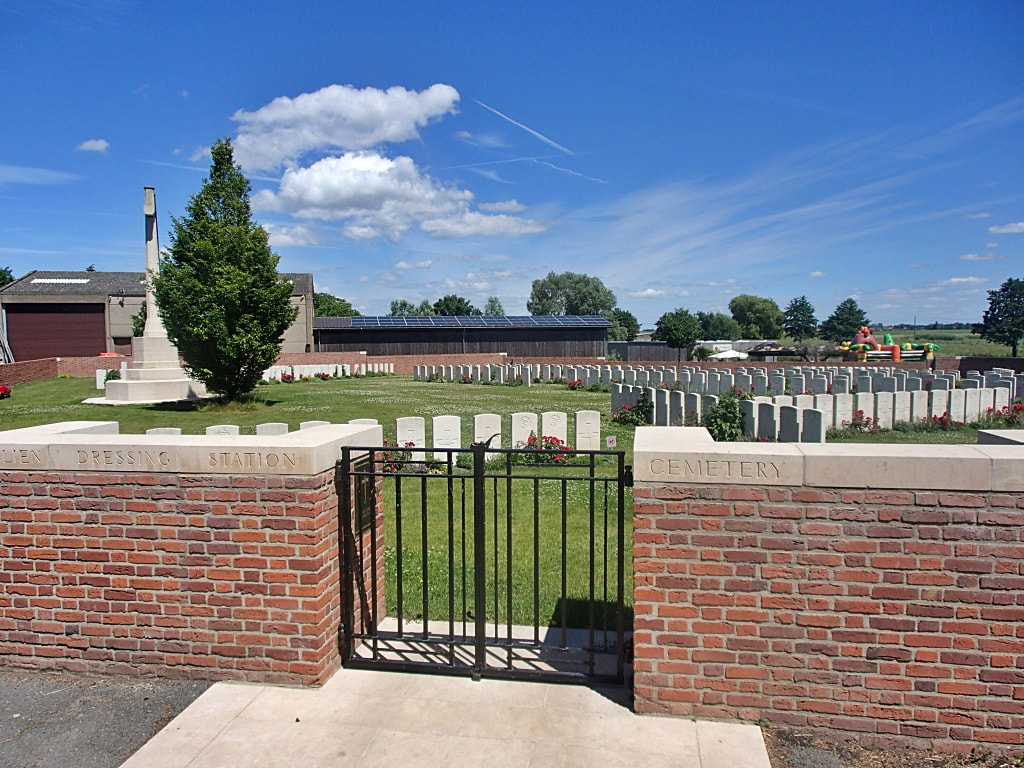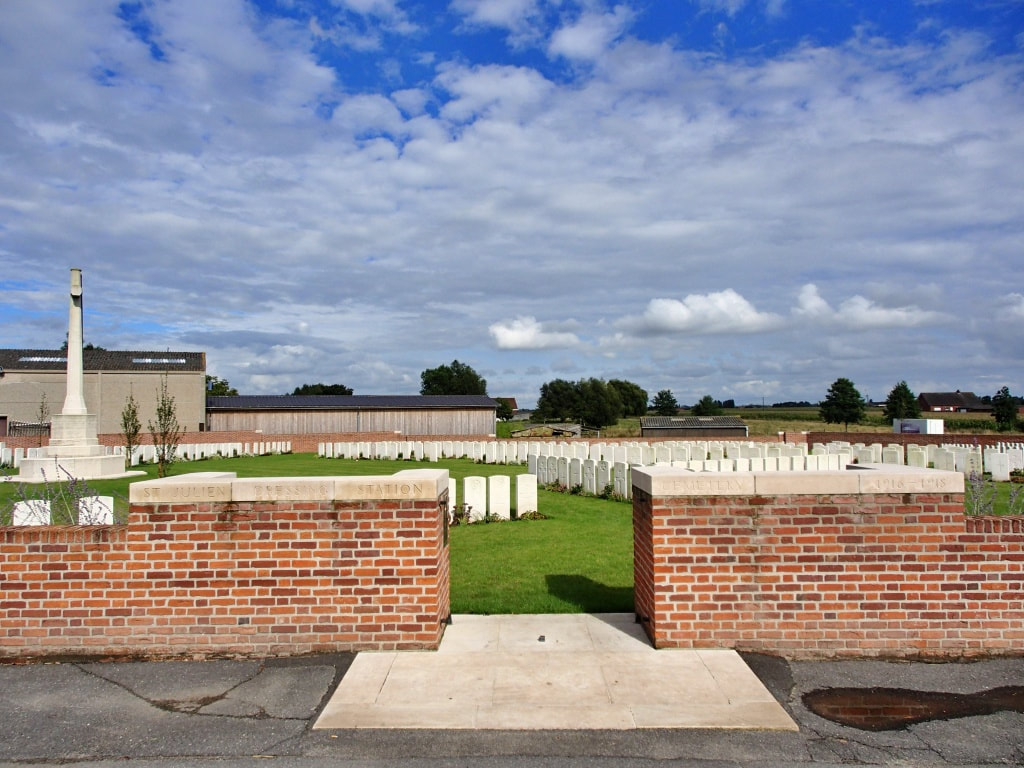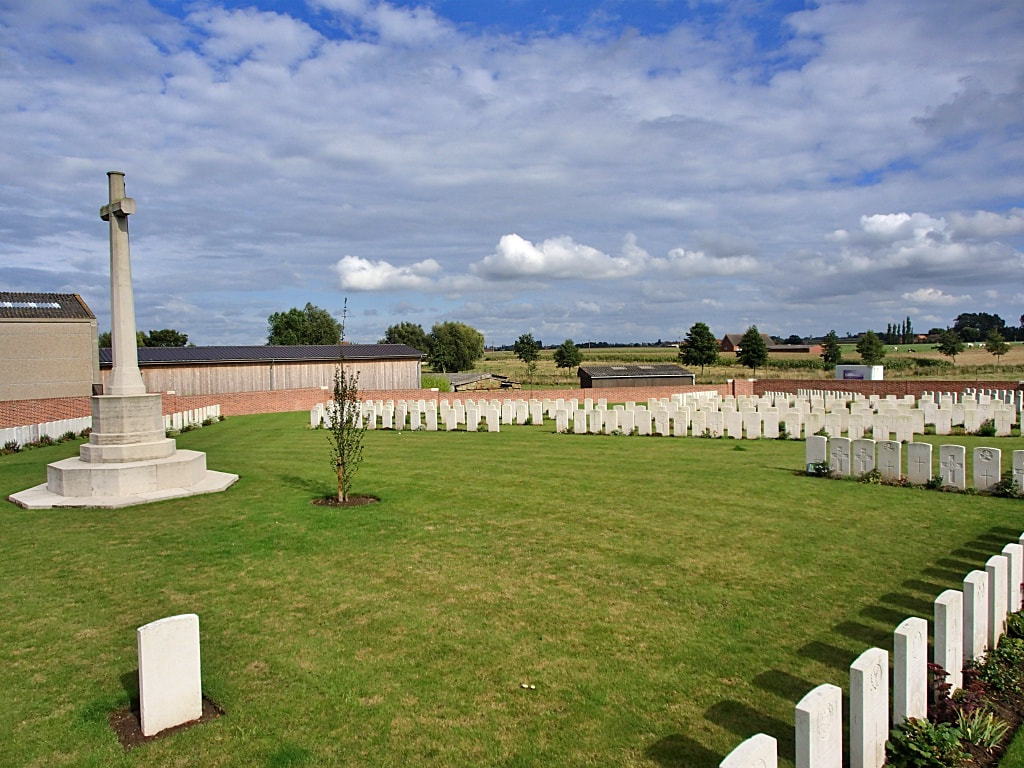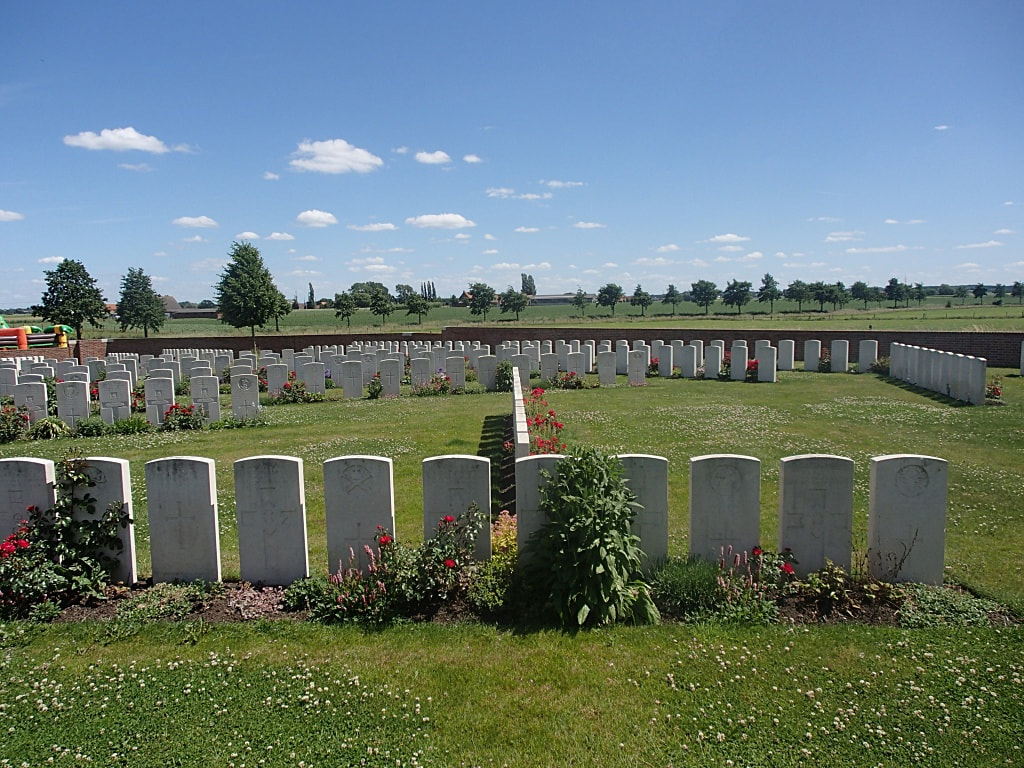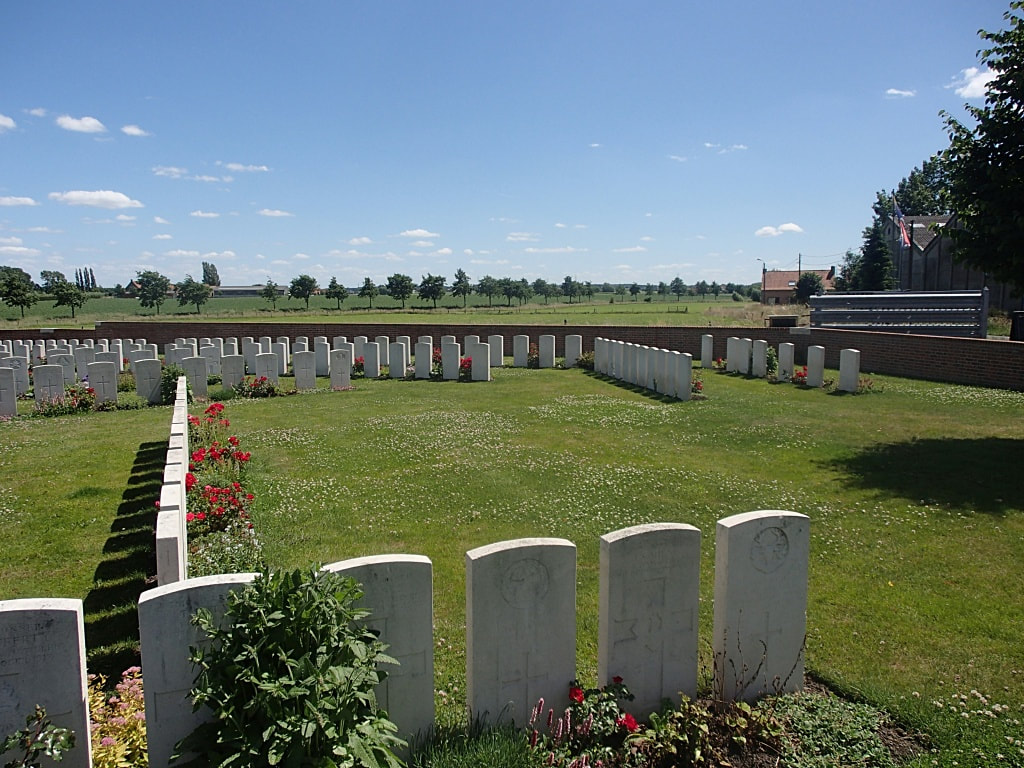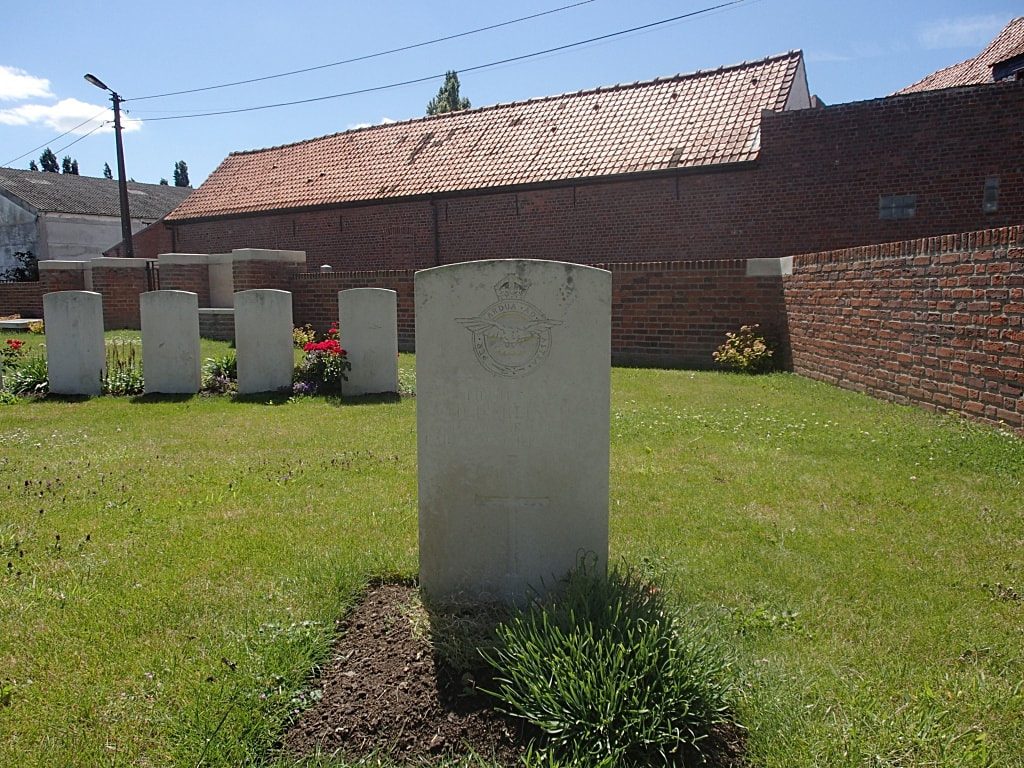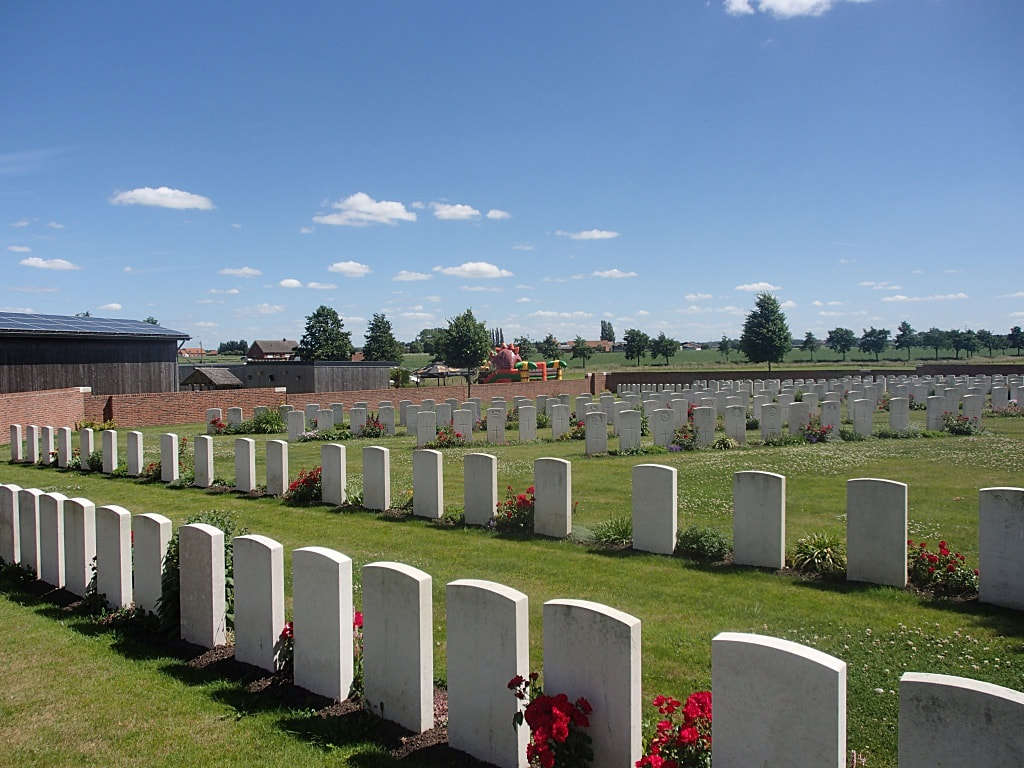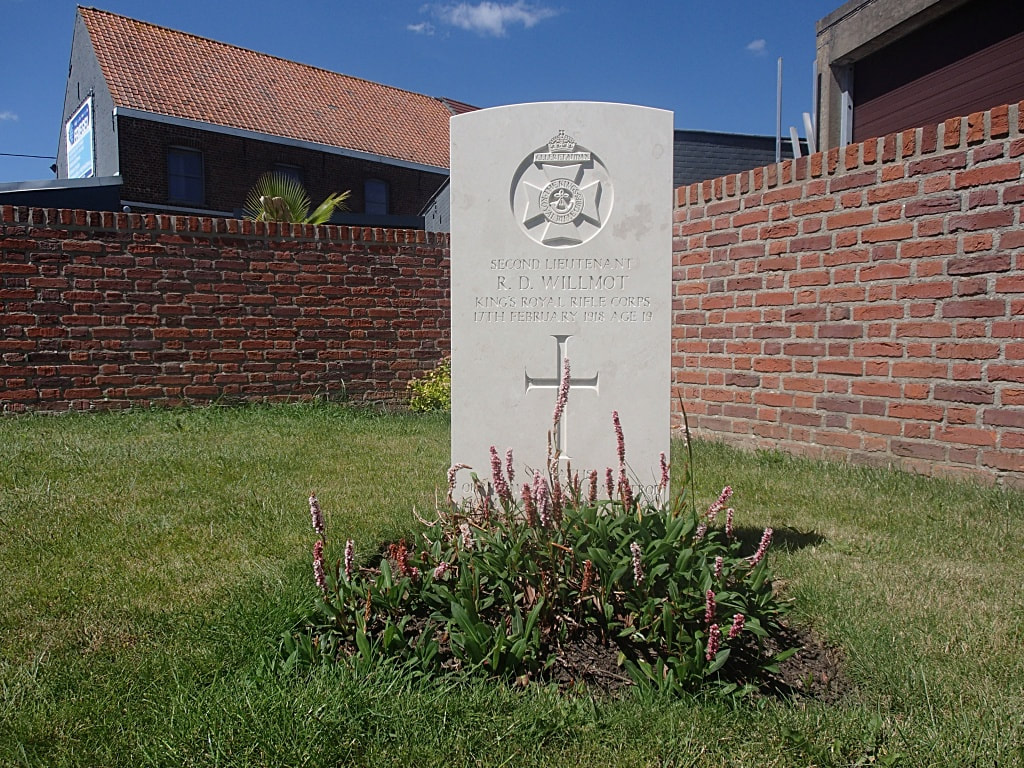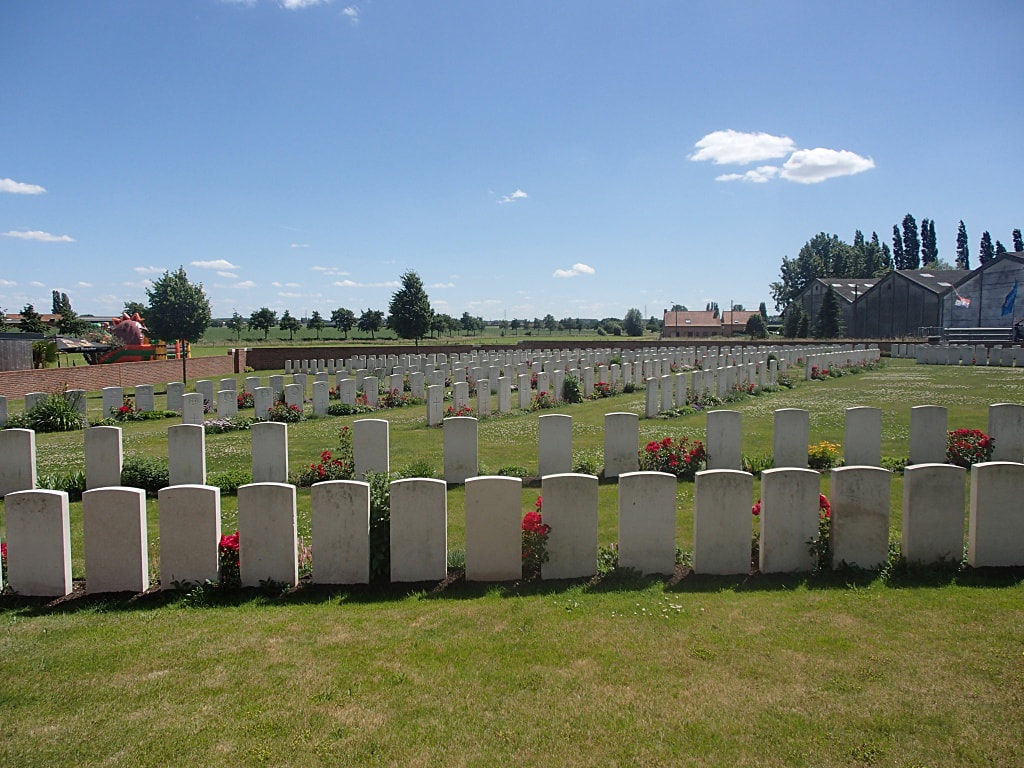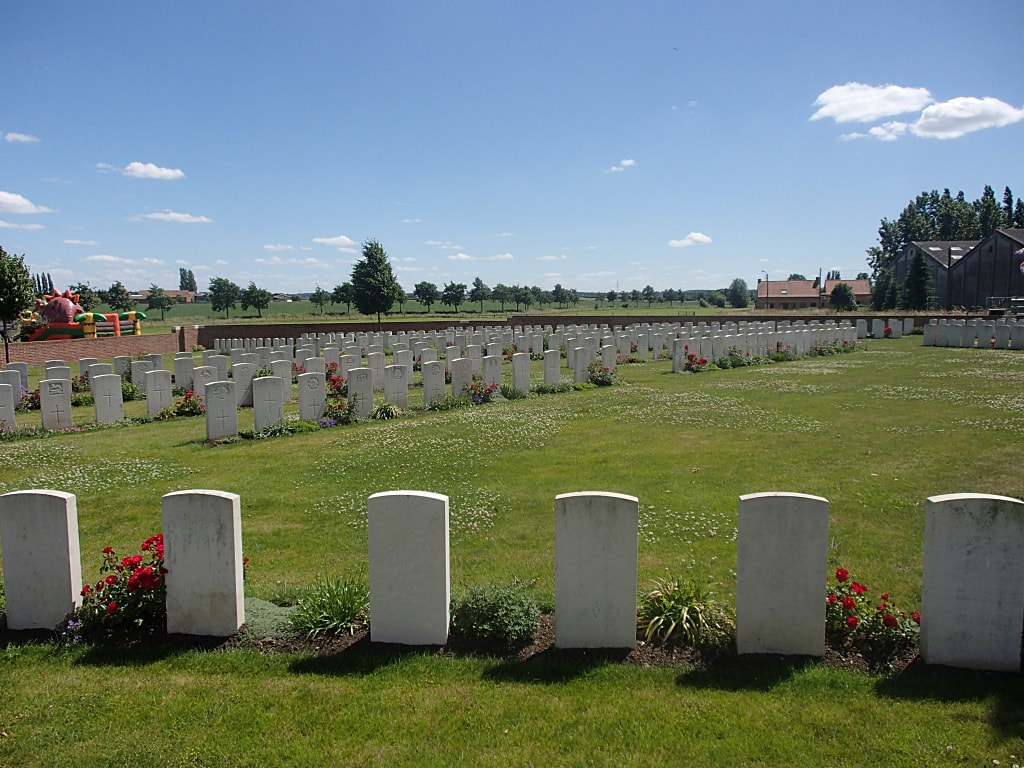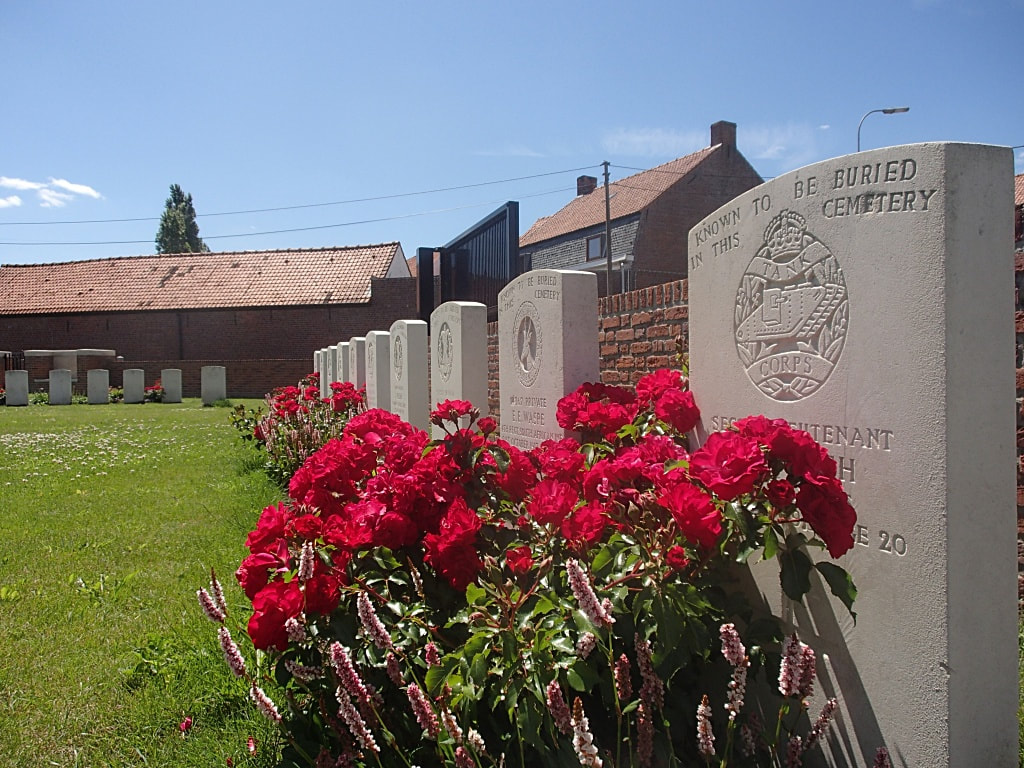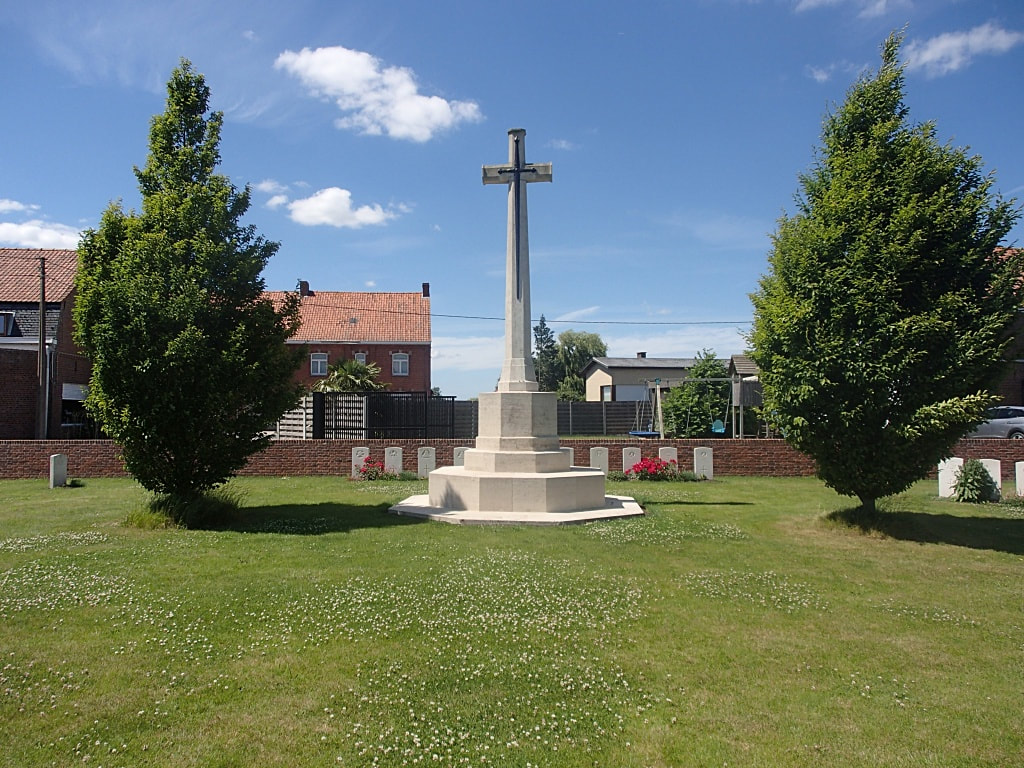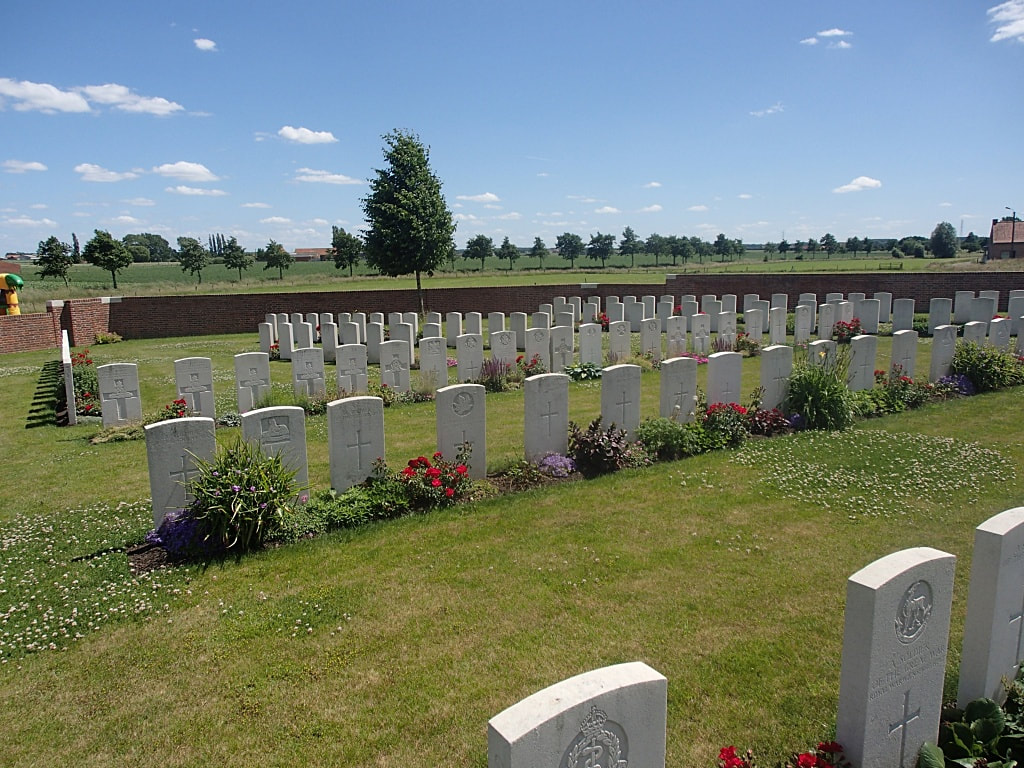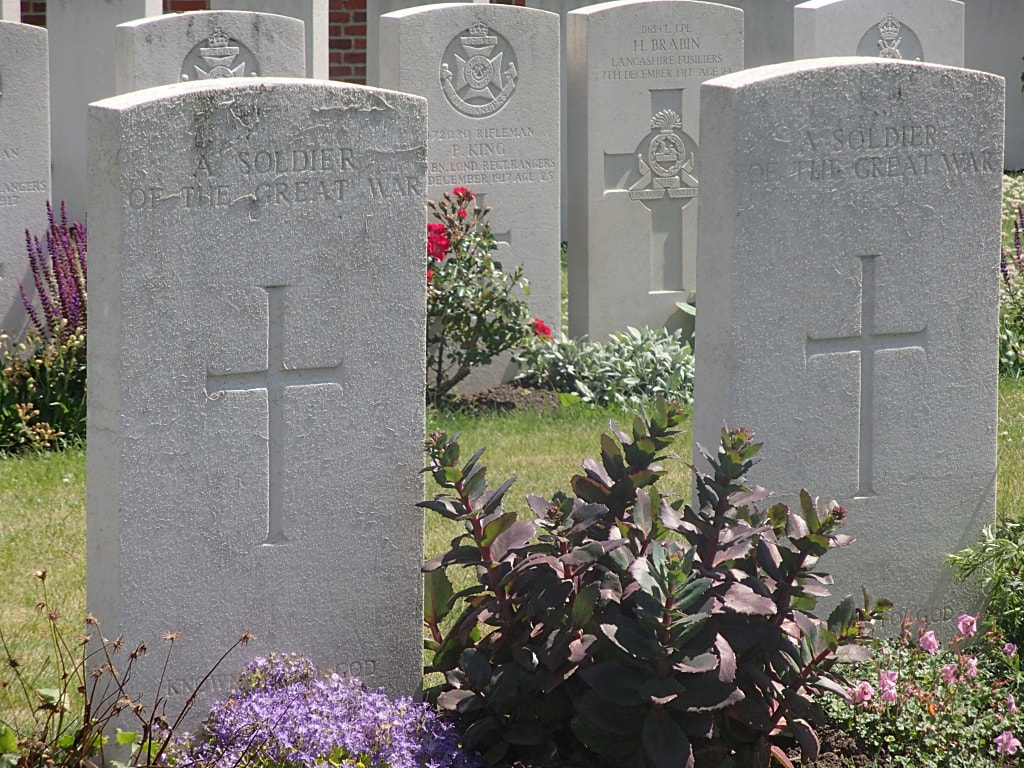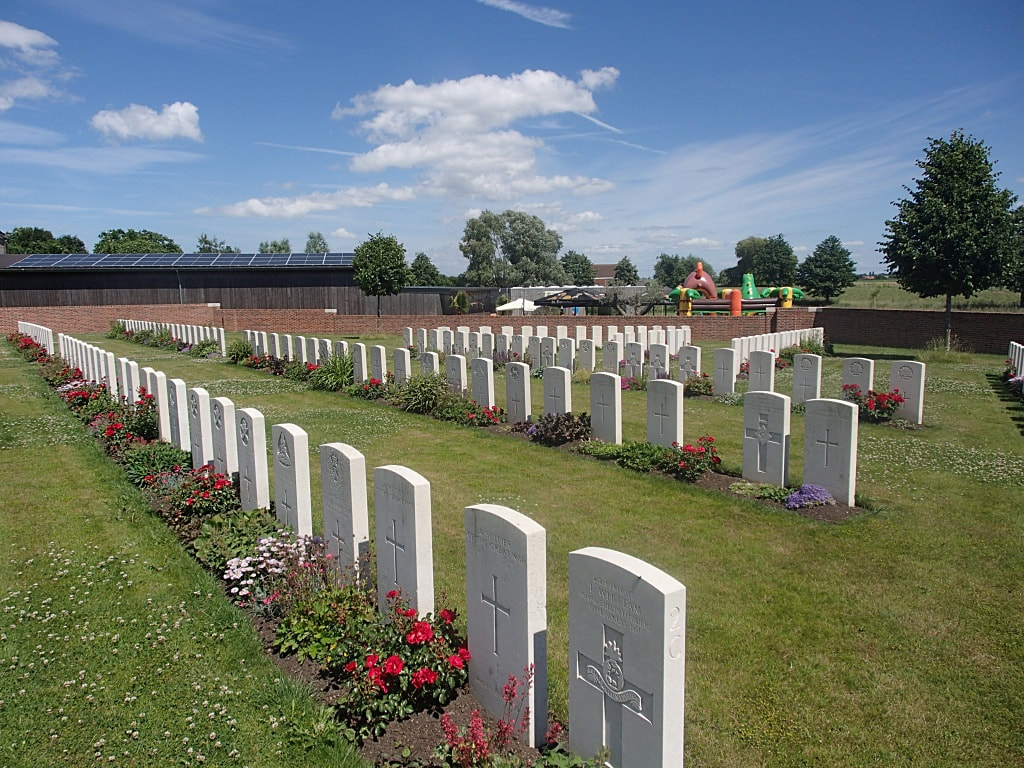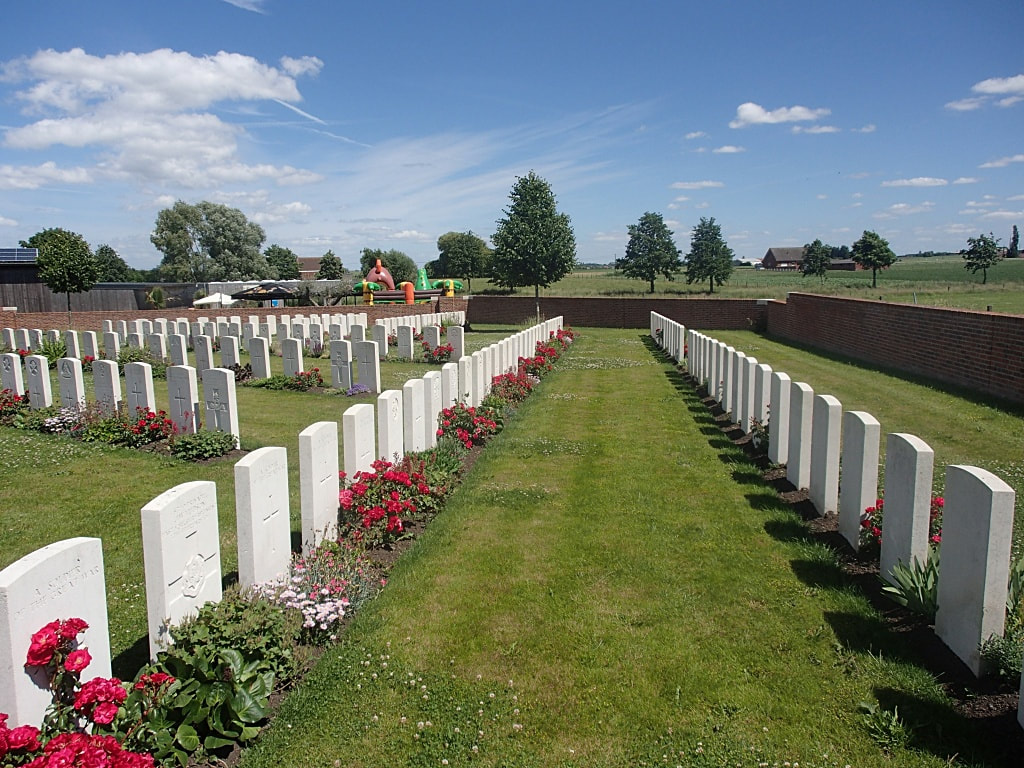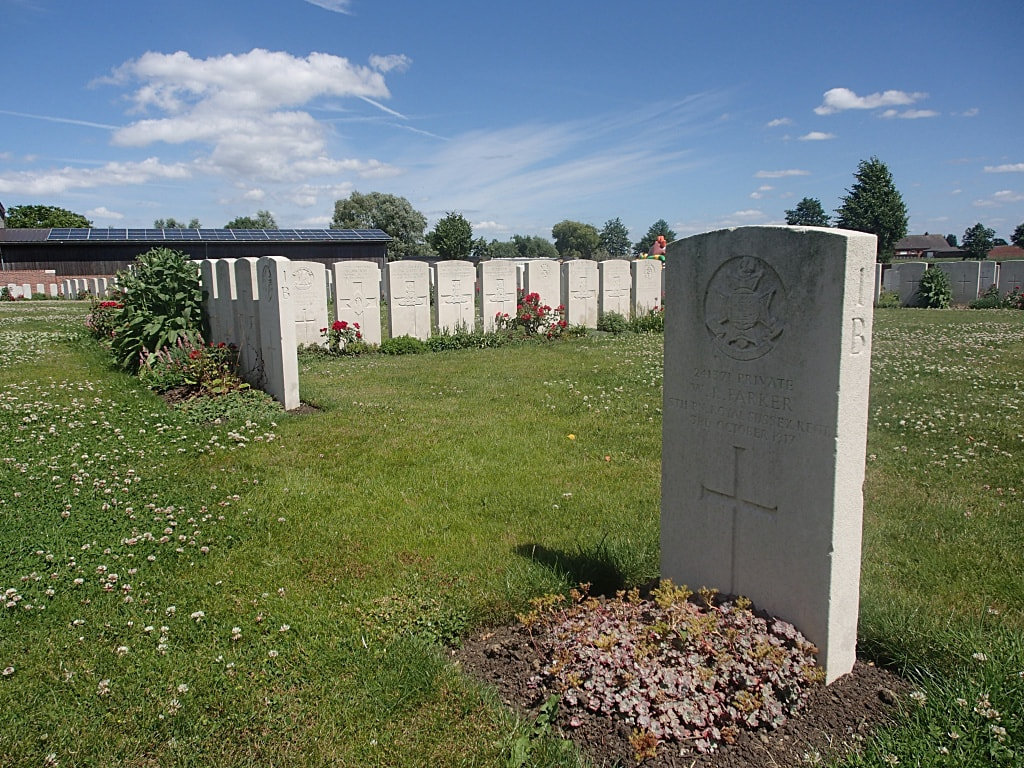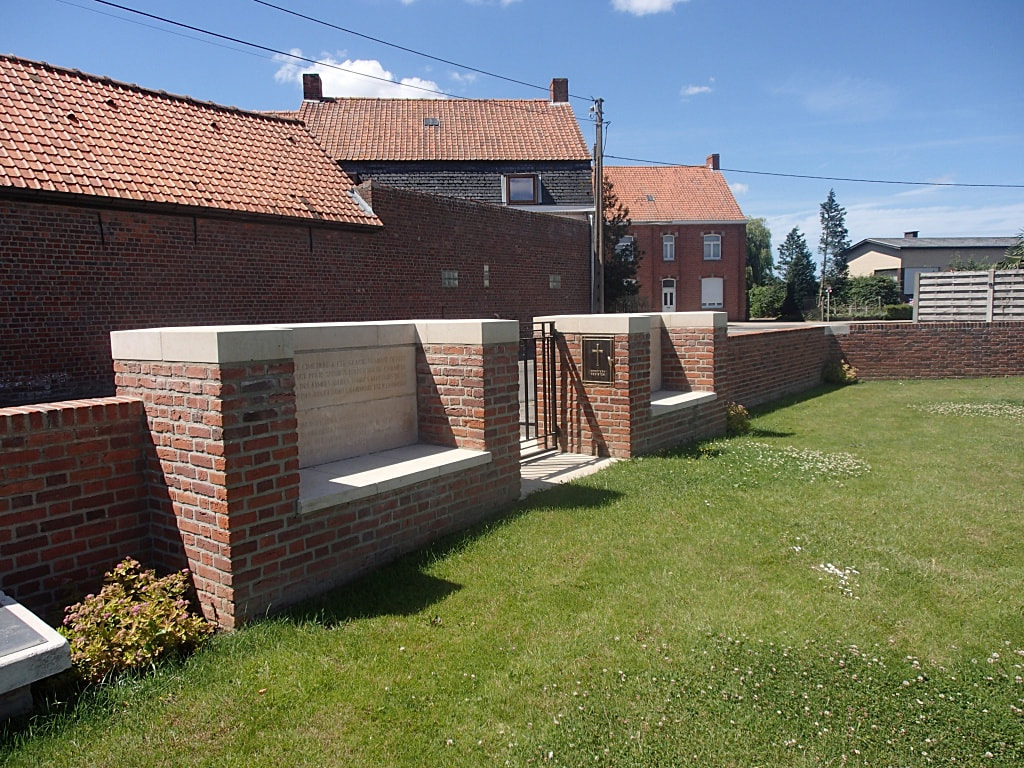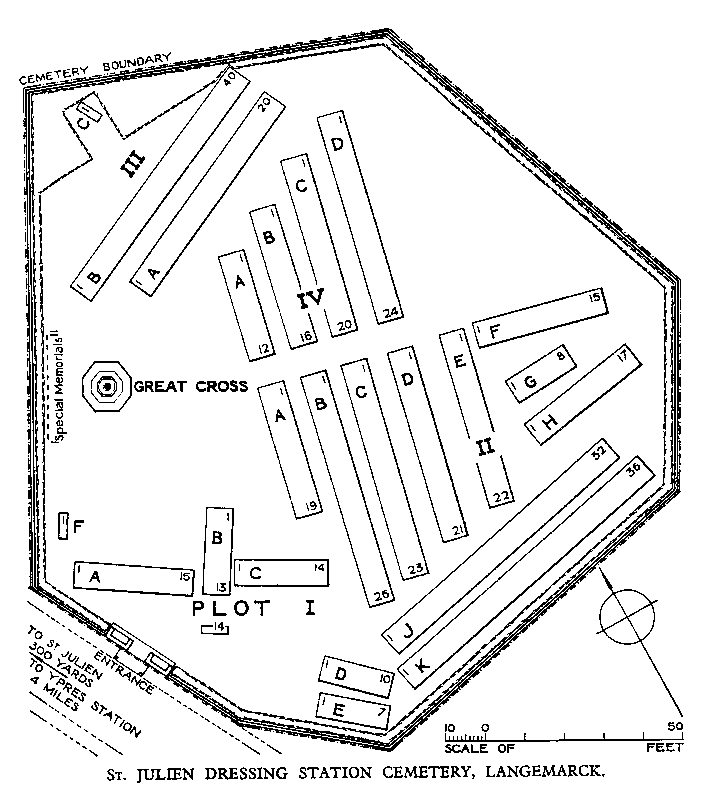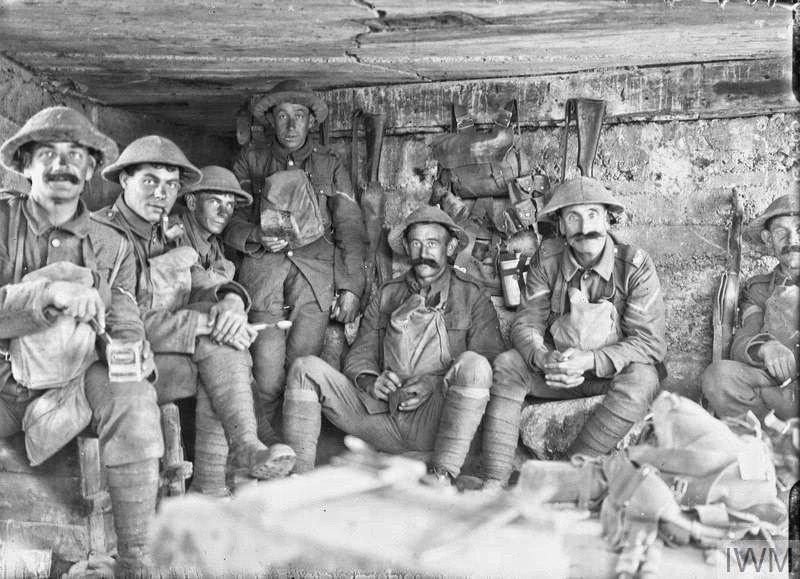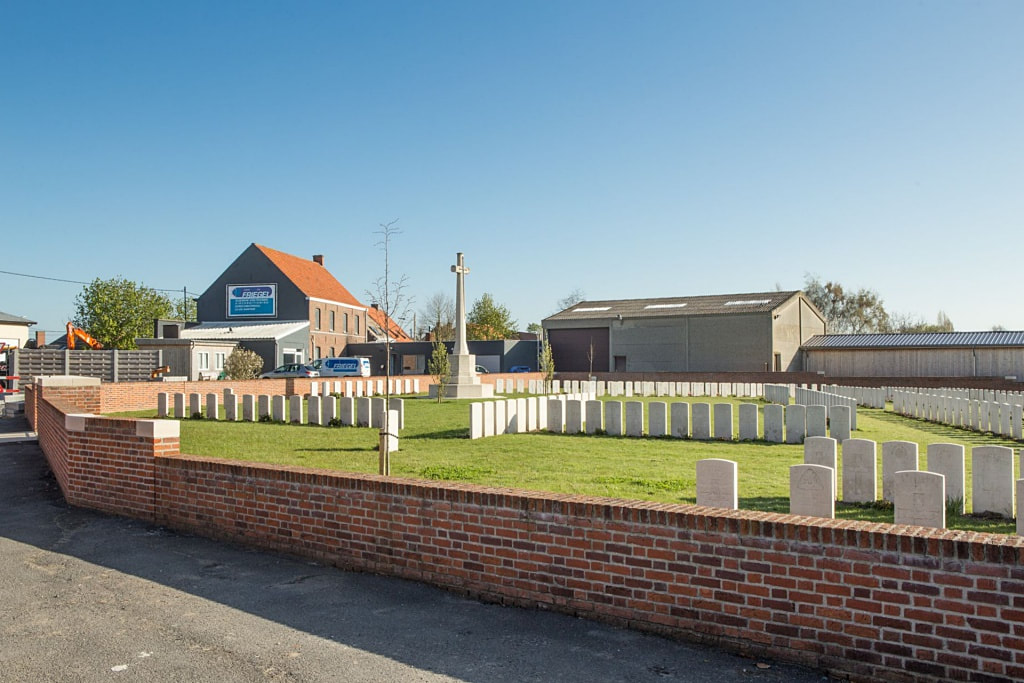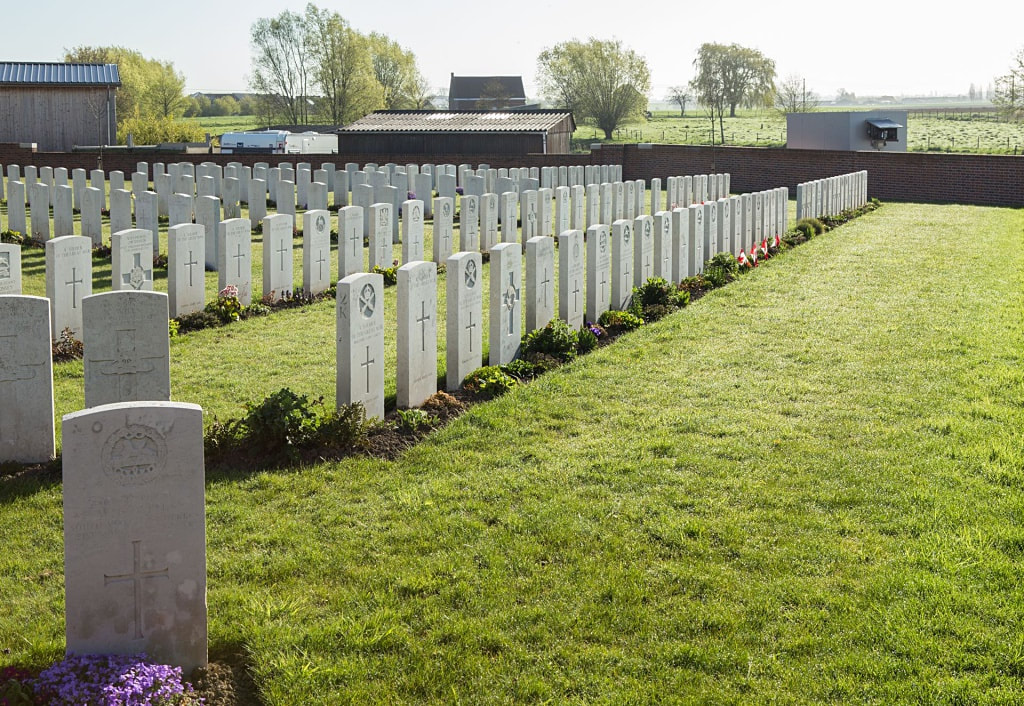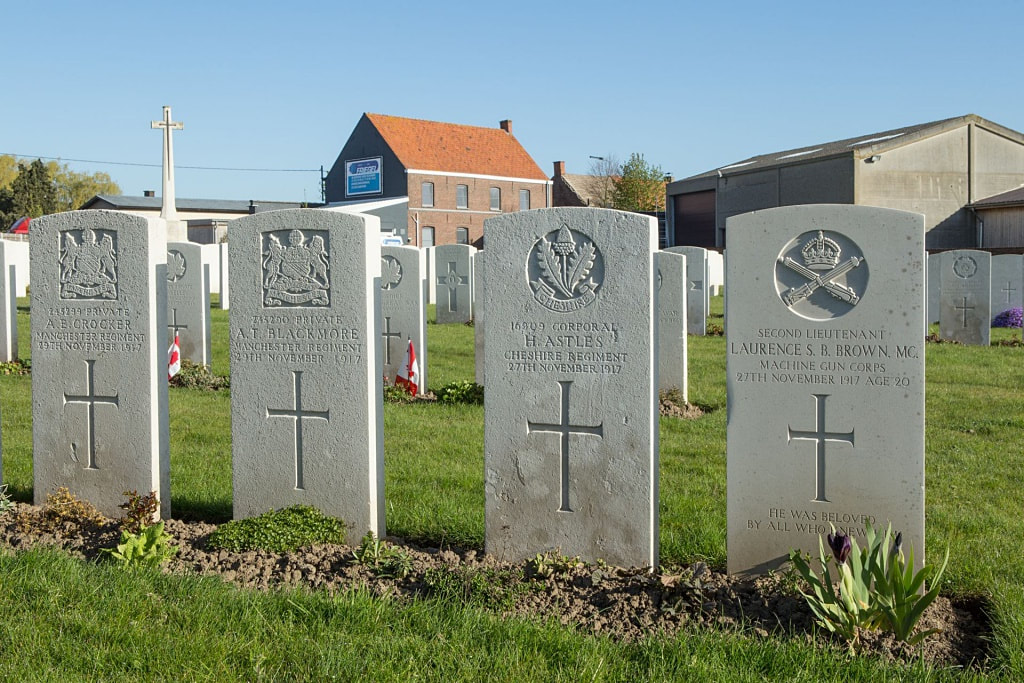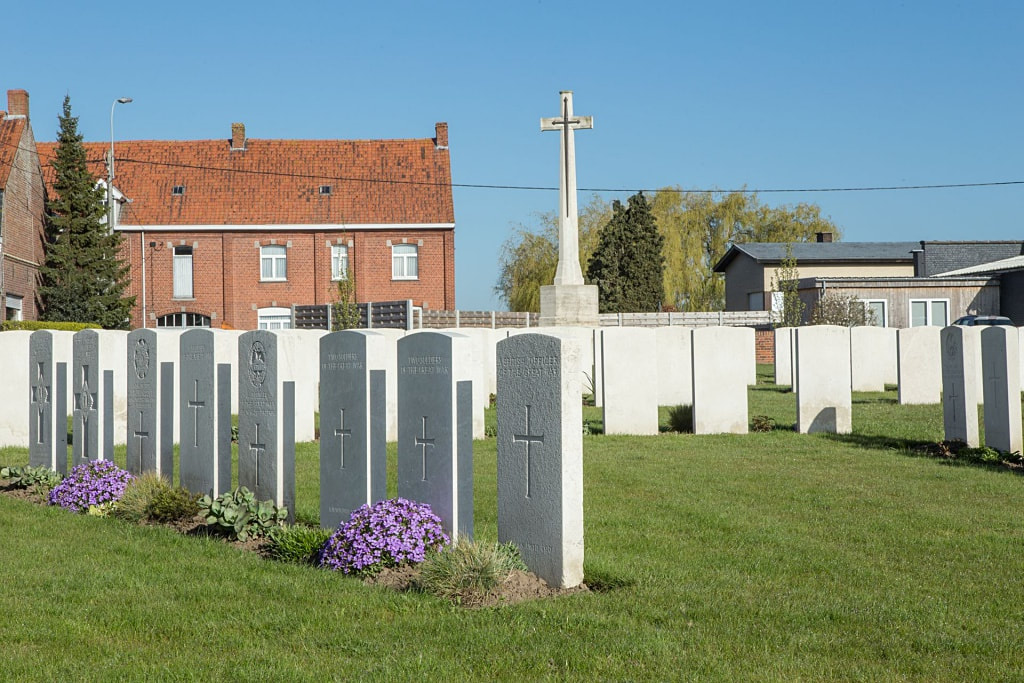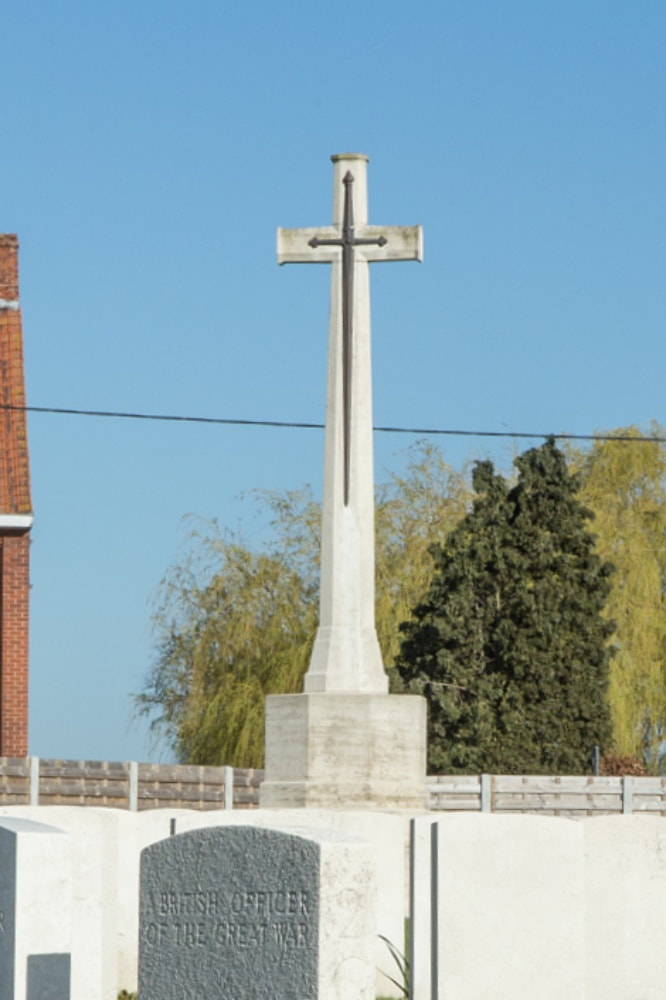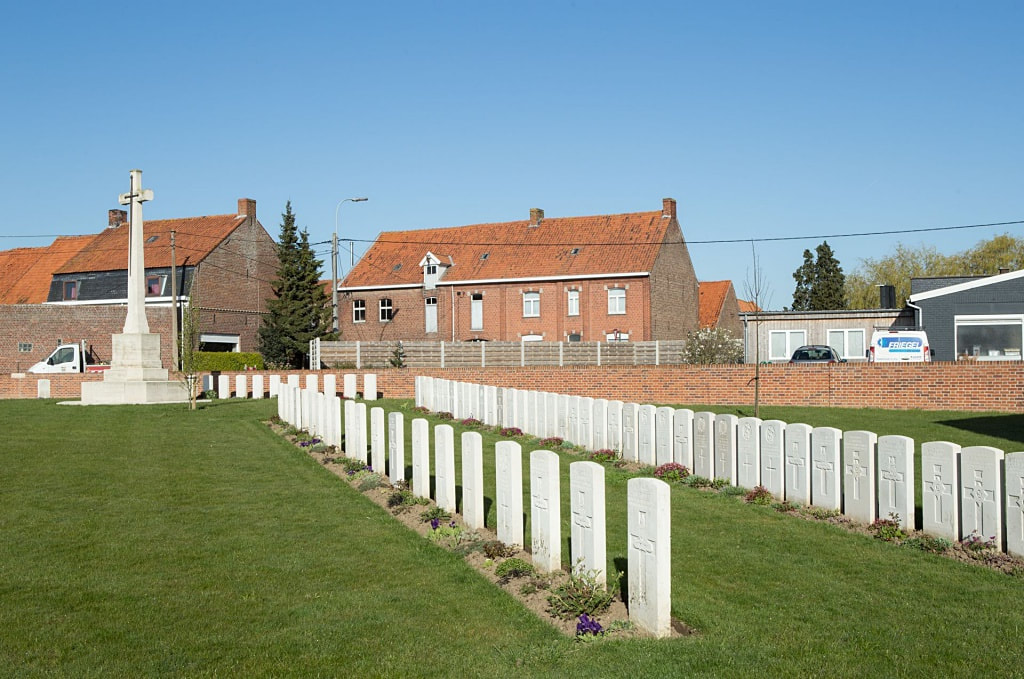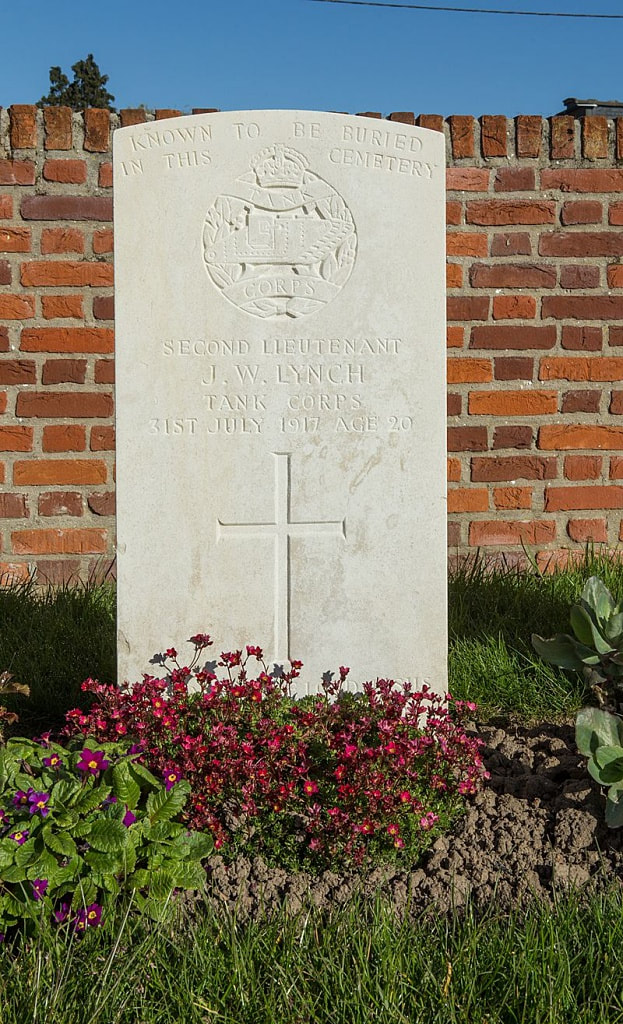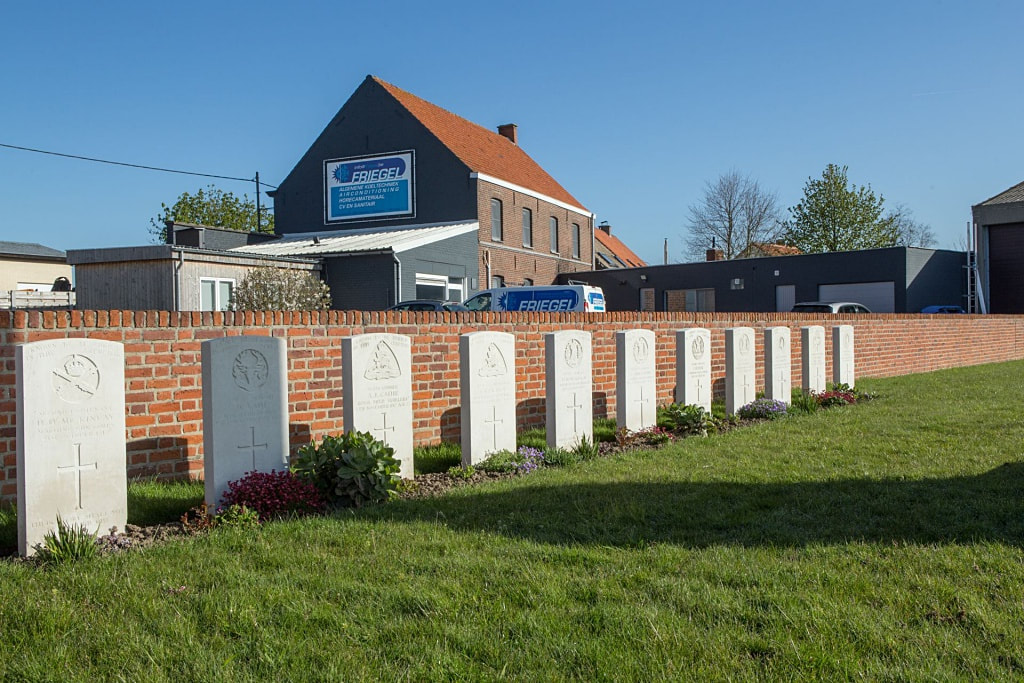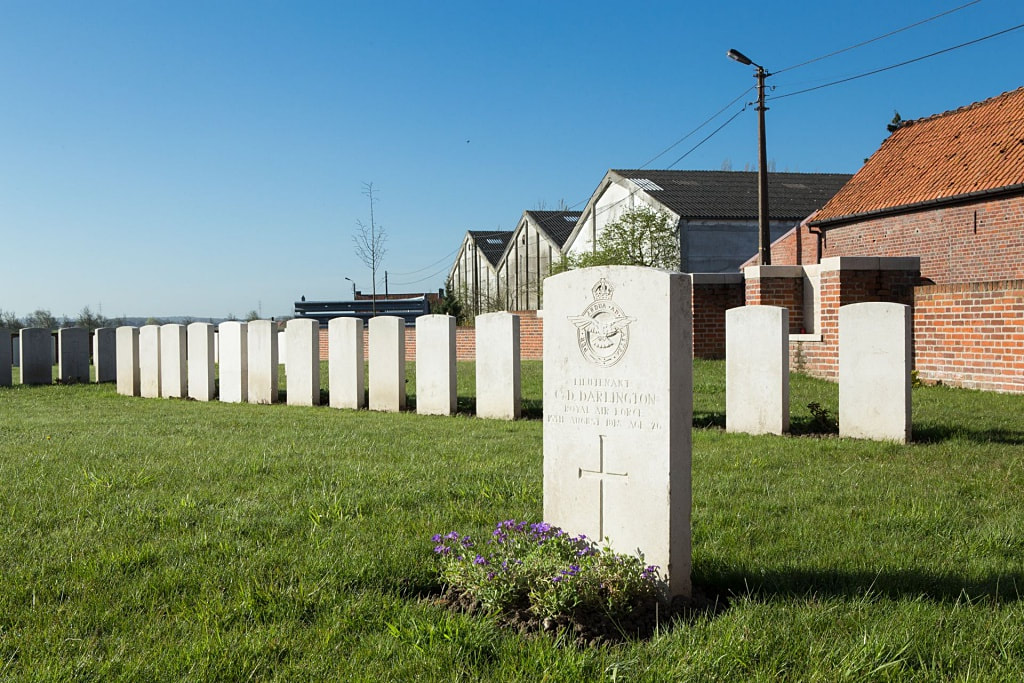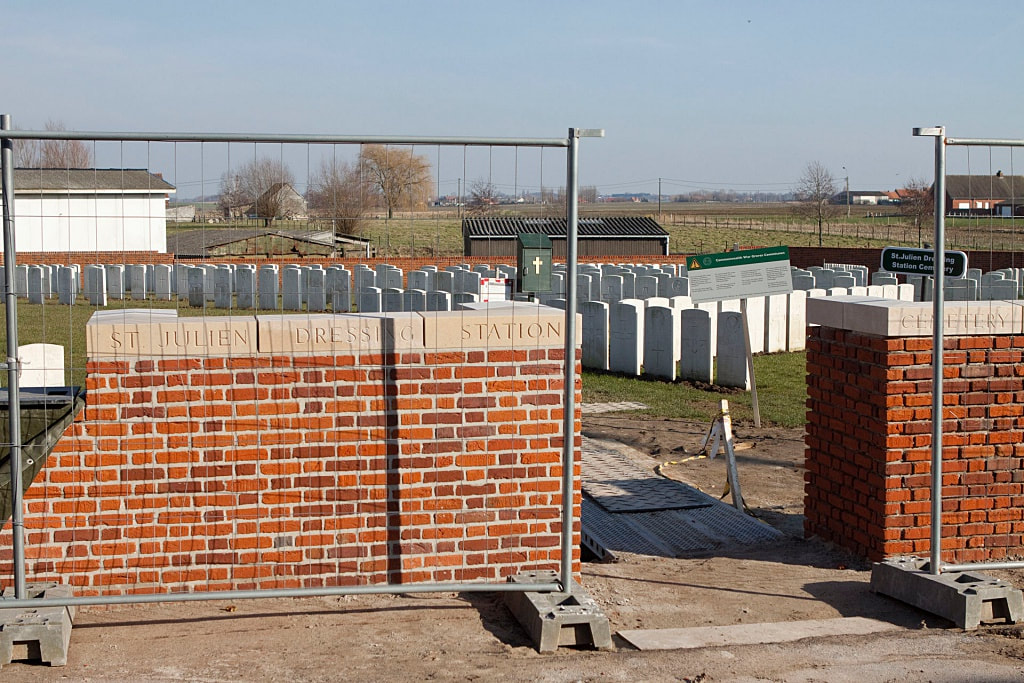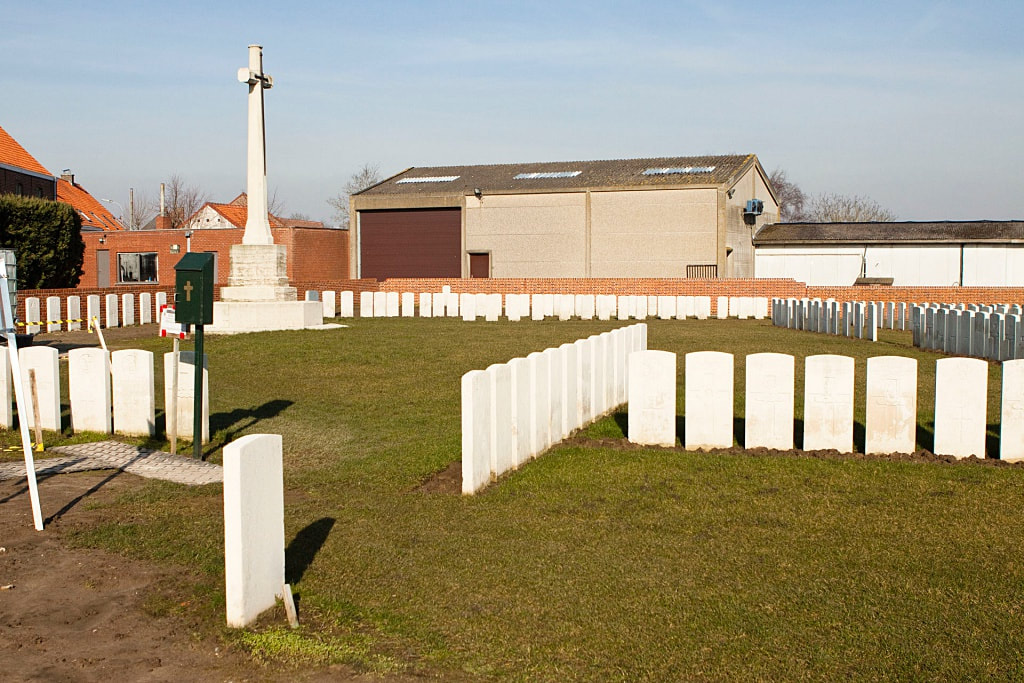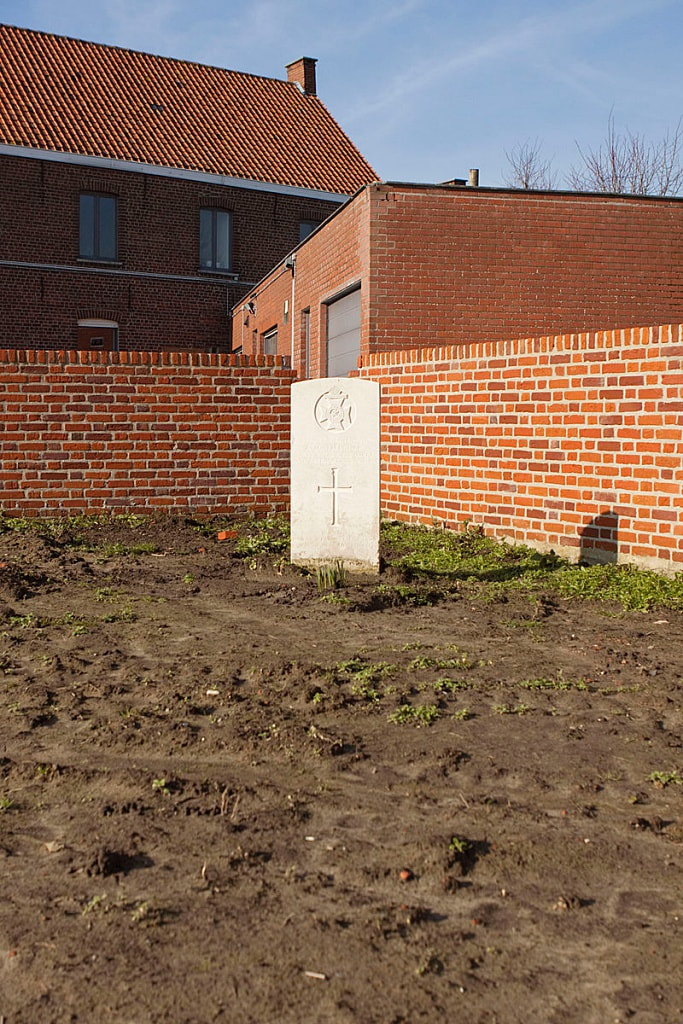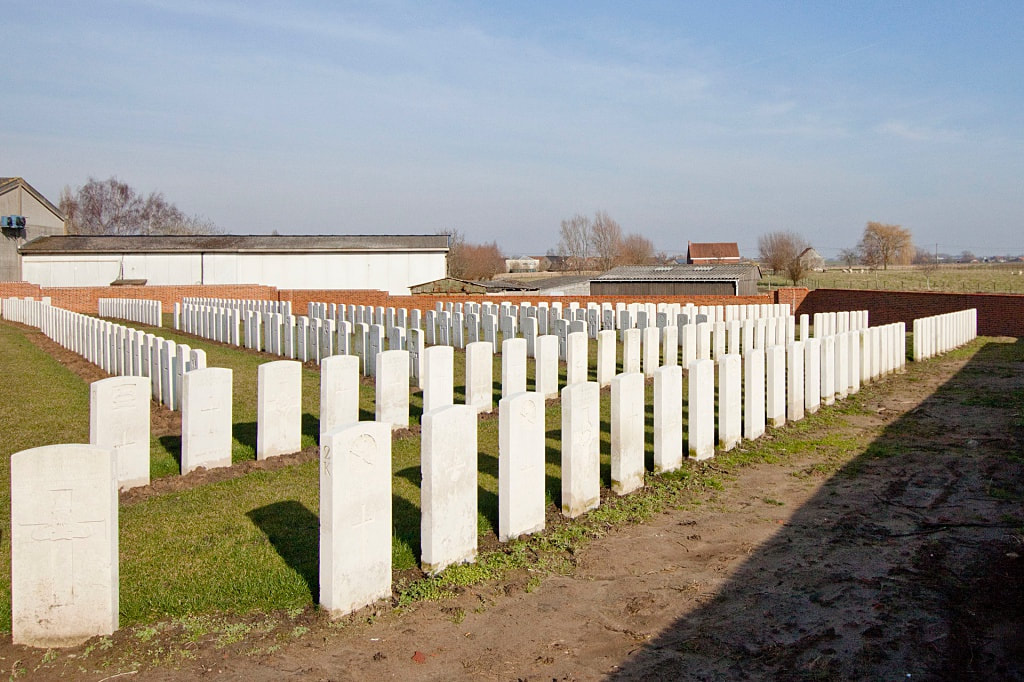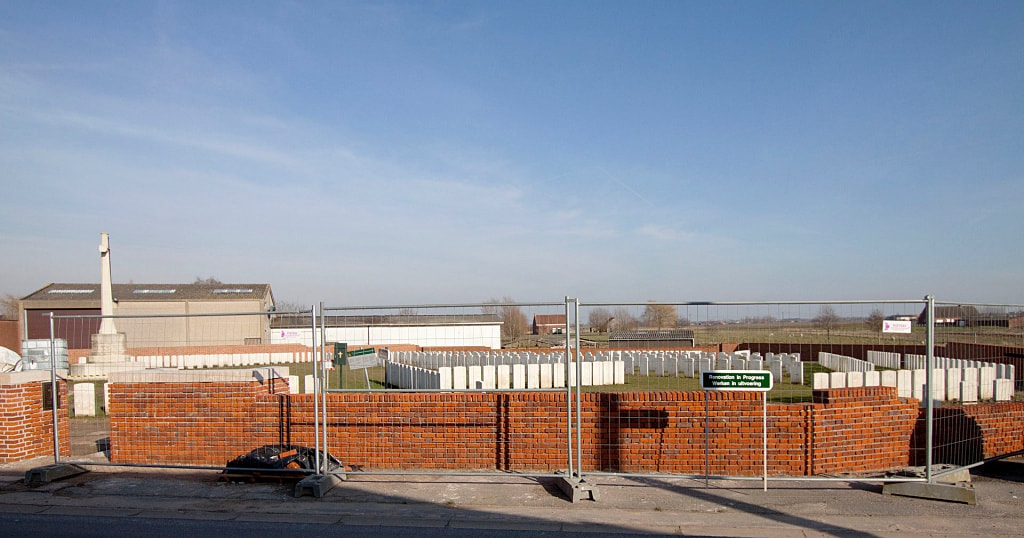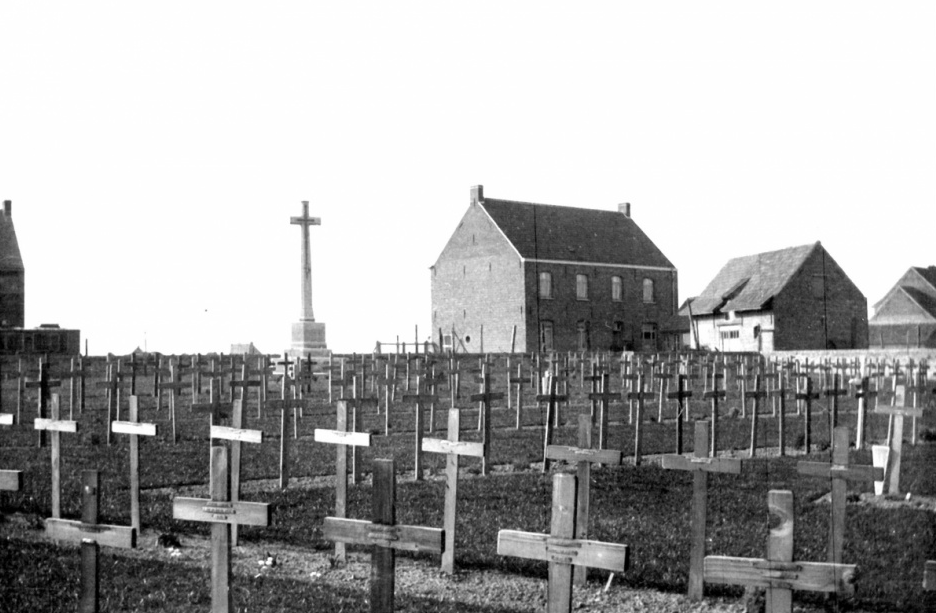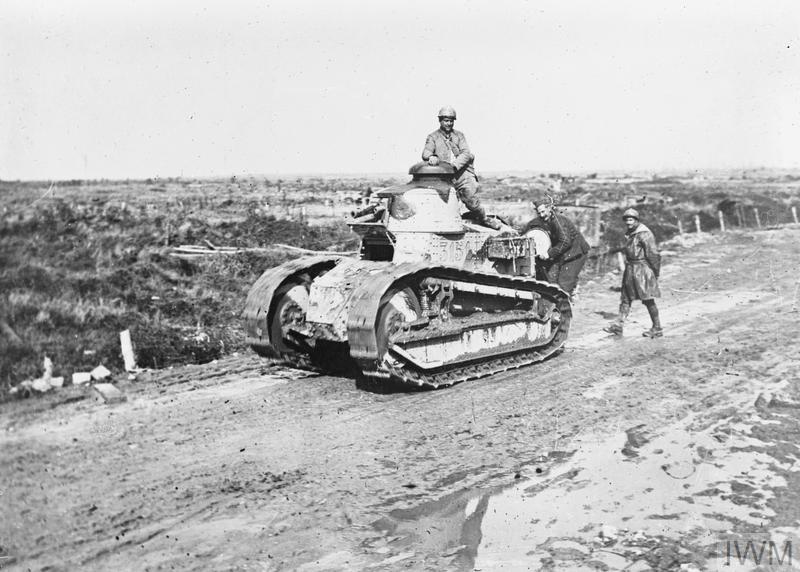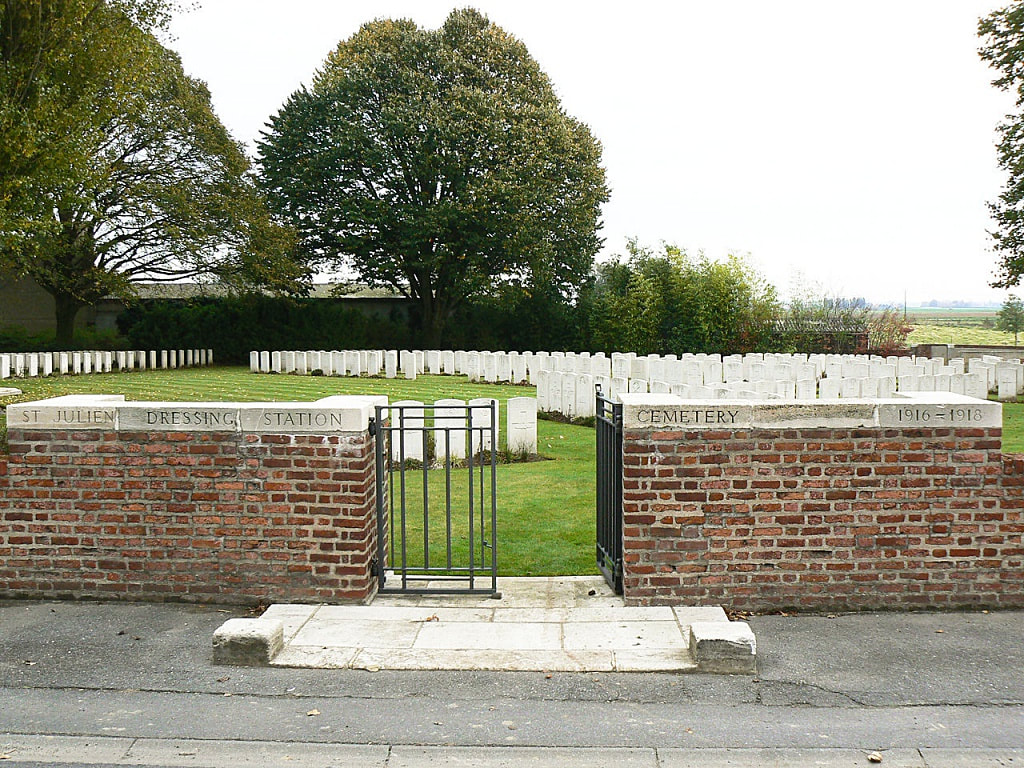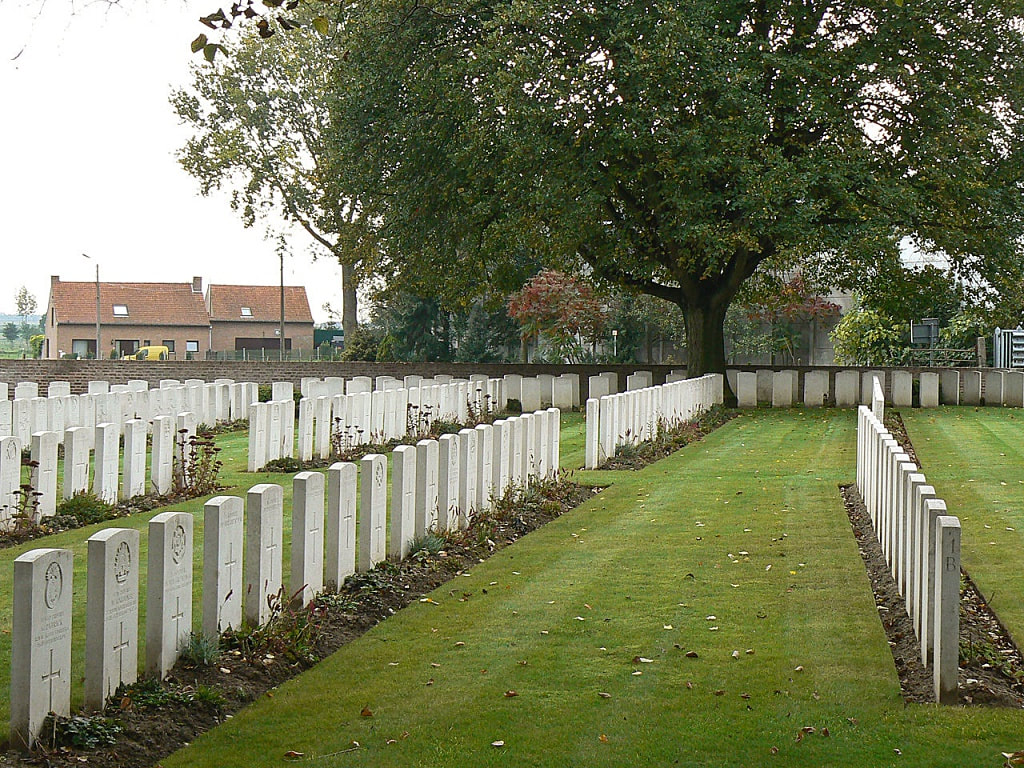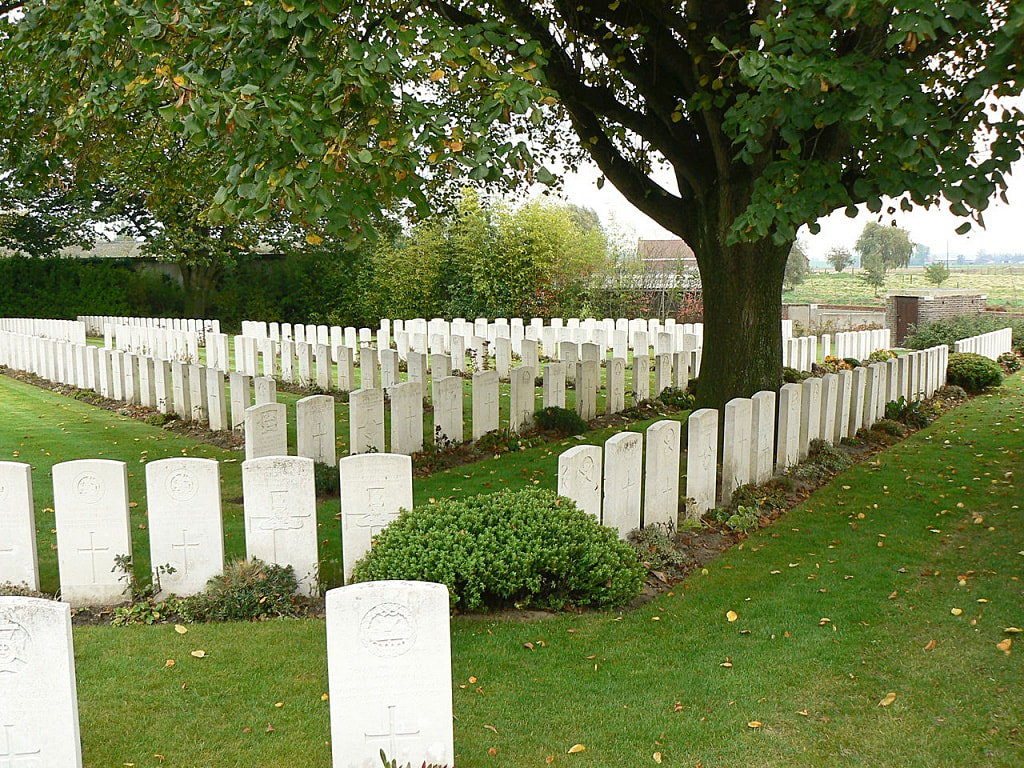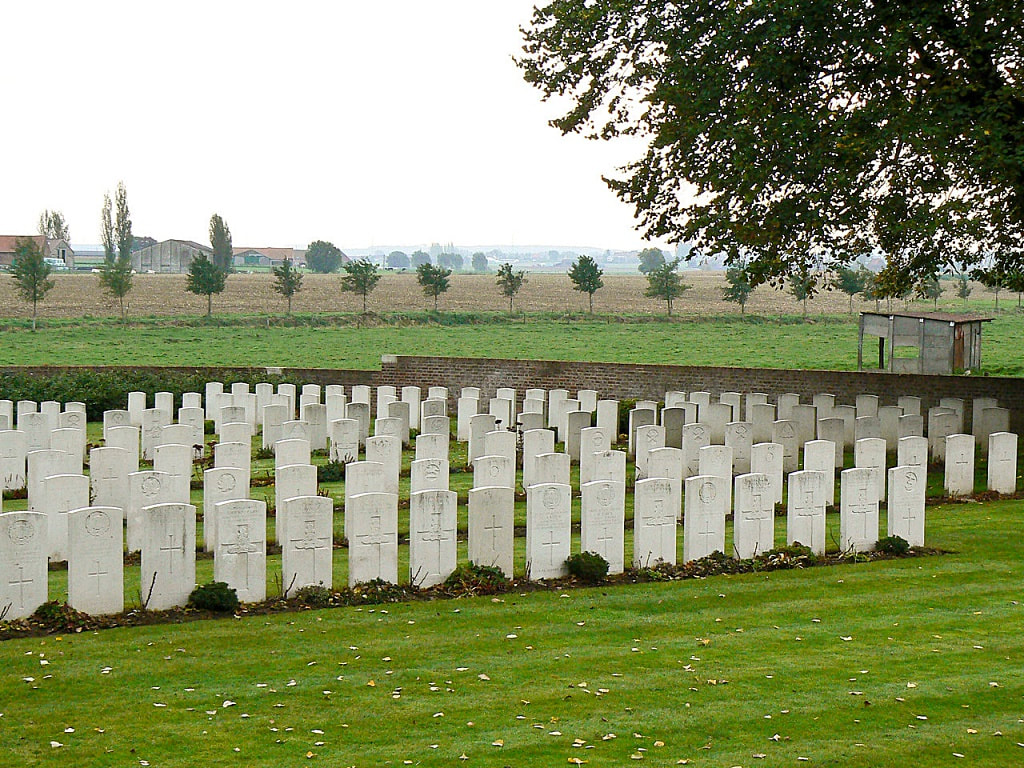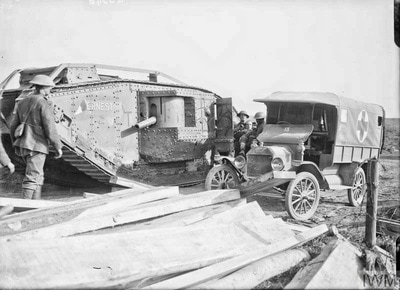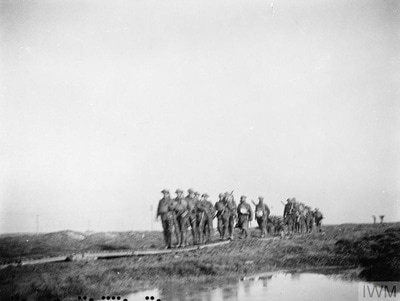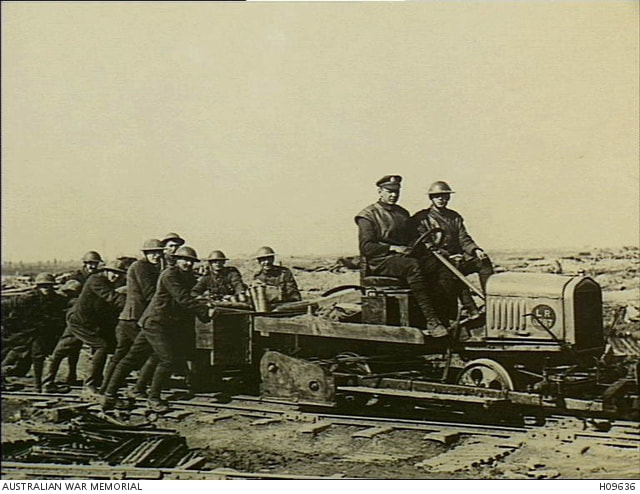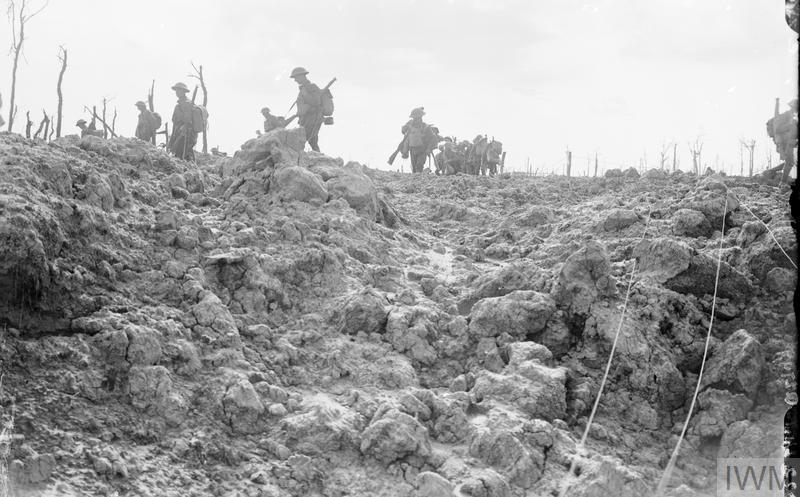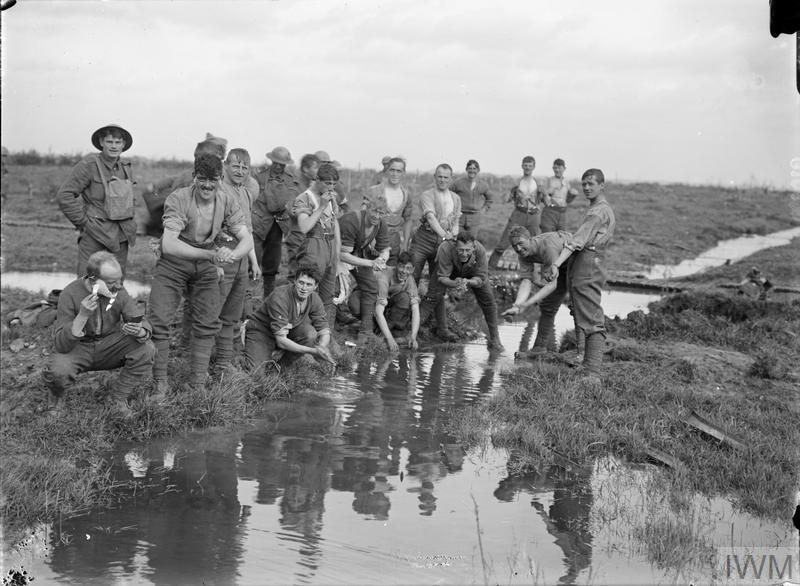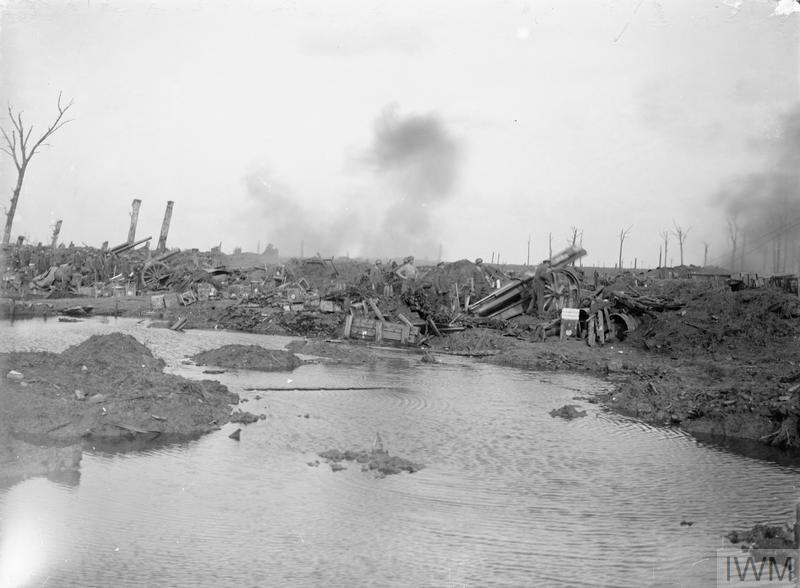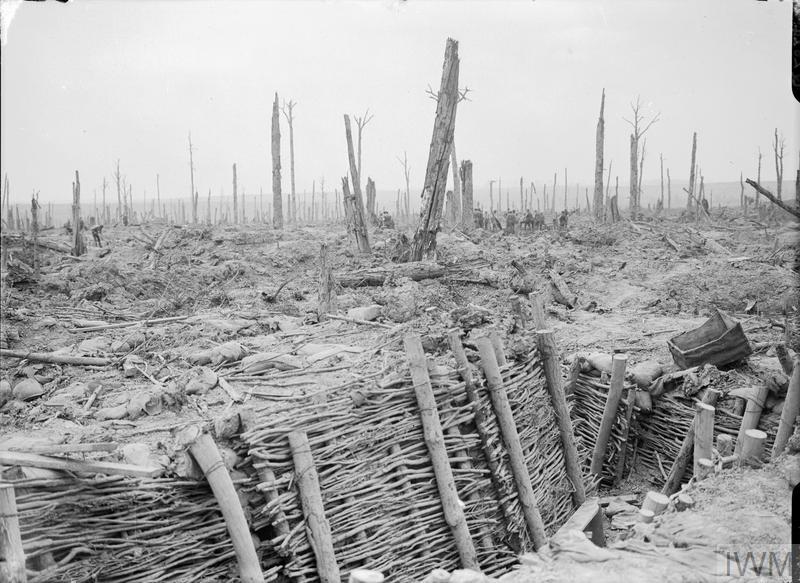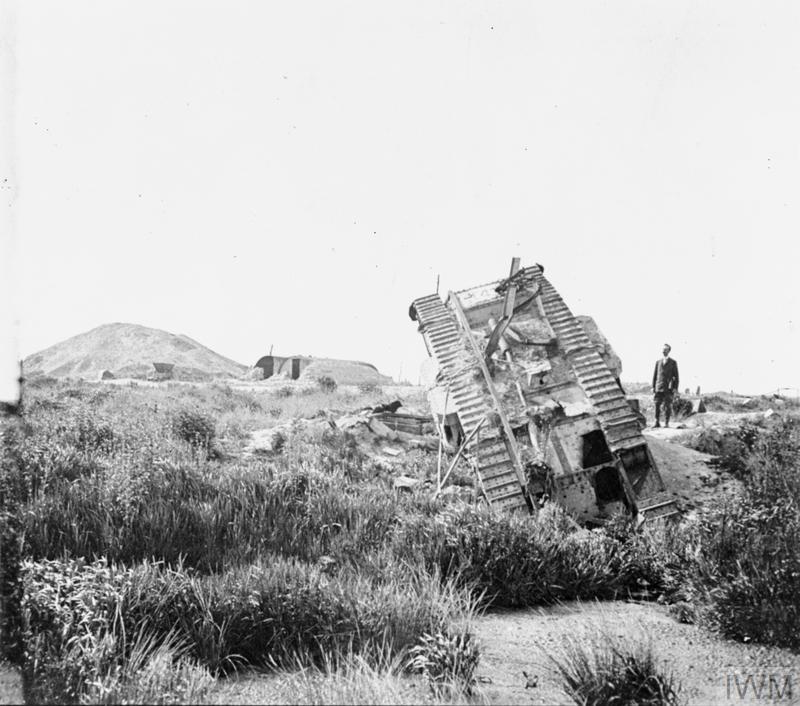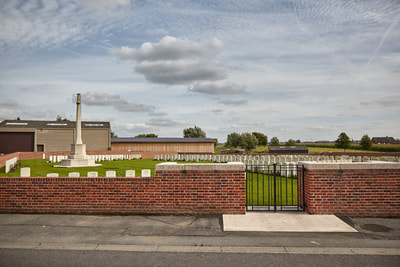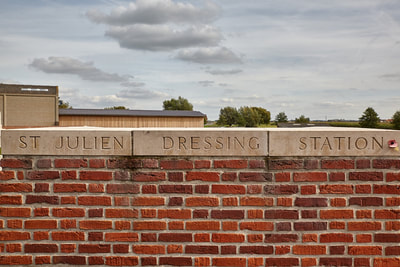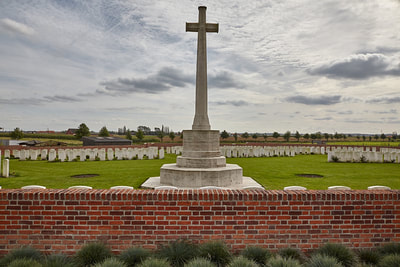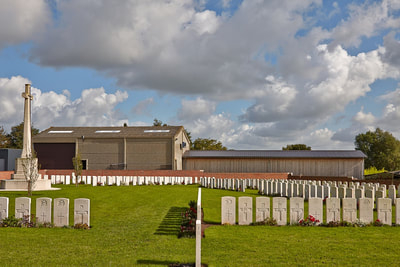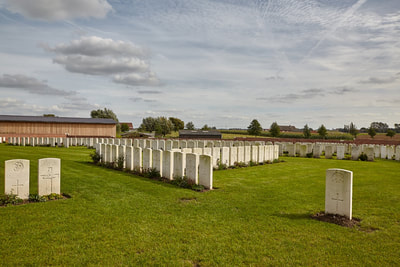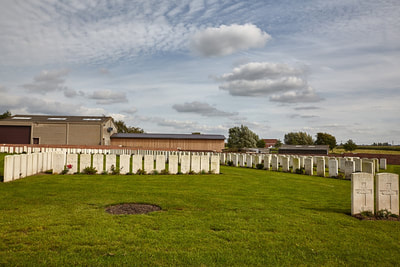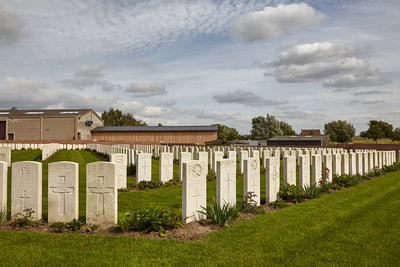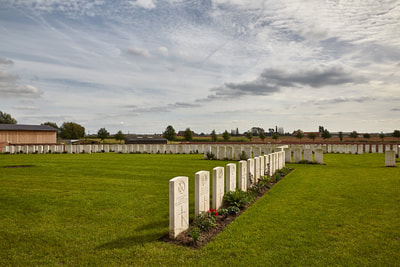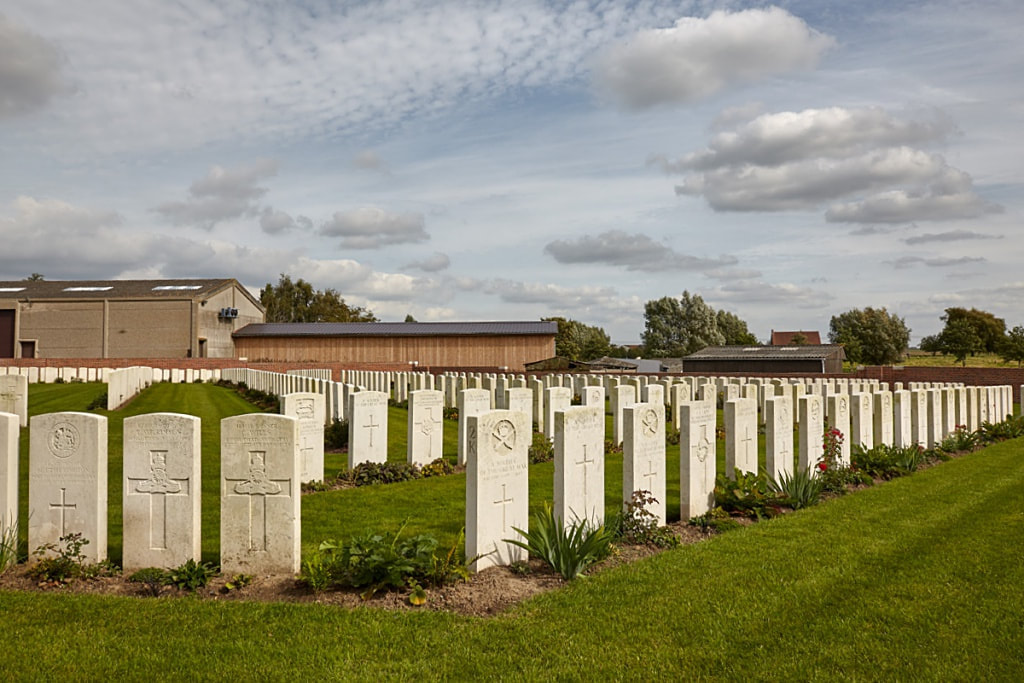ST. JULIEN DRESSING STATION CEMETERY
West-Vlaanderen
Belgium
GPS Coordinates - Latitude: 50.88776, Longitude: 2.93536
Location Information
St. Julien Dressing Station Cemetery is located 6 Kms from Ieper town centre on the Felix Nadarstraat, a road leading from the Brugseweg (N313), connecting Ieper to Brugge.
Two streets connect Ieper town centre onto the Brugseweg; Torhoutstraat leads from the market square onto the Kalfvaartstraat. At the end of Kalfvaartstraat is a large junction on which Brugseweg is the first right hand turning. 5 Kms along the Brugseweg, just before the village of St. Juliaan, lies the right hand turning onto Felix Nadarstraat. The cemetery itself lies immediately after this right hand turning, on the left hand side of the road.
The Canadian Memorial at Vancouver Cross Roads is about 1.2 Kms north of the village, on the road to Poelcappelle.
Visiting Information
Wheelchair access is possible via main entrance.
Historical Information
St. Julien was within the Allied lines from the late autumn of 1914 until April 1915. The Germans used poison gas here for the first time on 22 April, but the village was held by the 3rd Canadian Infantry Brigade until a second gas attack two days later. It was recaptured by the 39th Division in early August but passed into German hands again on 27 April 1918. St Julien was finally retaken by the Belgian Army on 28 September.
The Dressing Station Cemetery was begun in September 1917. By March 1918, the cemetery consisted of Plots I, III and part of Plot II, and contained 203 graves, but it was severely damaged by shell fire in the summer of 1918. The cemetery was increased after the Armistice when graves were brought into Plots II and IV from the battlefields surrounding St. Julien.
There are 420 First World War servicemen buried or commemorated in this cemetery. 180 of the burials are unidentified, but there are special memorials to 11 casualties known or believed to be buried among them.
The cemetery was designed by Sir Reginald Blomfield and William Harrison Cowlishaw
Total Burials: 428.
Identified Casualties: United Kingdom 232, Australia 6, South Africa 5, Canada 4, New Zealand 1. Total 248.
Unidentified Casualties: United Kingdom 67, Canada 11, Australia 4, New Zealand 2, Unknown 96. Total 180.
St. Julien Dressing Station Cemetery is located 6 Kms from Ieper town centre on the Felix Nadarstraat, a road leading from the Brugseweg (N313), connecting Ieper to Brugge.
Two streets connect Ieper town centre onto the Brugseweg; Torhoutstraat leads from the market square onto the Kalfvaartstraat. At the end of Kalfvaartstraat is a large junction on which Brugseweg is the first right hand turning. 5 Kms along the Brugseweg, just before the village of St. Juliaan, lies the right hand turning onto Felix Nadarstraat. The cemetery itself lies immediately after this right hand turning, on the left hand side of the road.
The Canadian Memorial at Vancouver Cross Roads is about 1.2 Kms north of the village, on the road to Poelcappelle.
Visiting Information
Wheelchair access is possible via main entrance.
Historical Information
St. Julien was within the Allied lines from the late autumn of 1914 until April 1915. The Germans used poison gas here for the first time on 22 April, but the village was held by the 3rd Canadian Infantry Brigade until a second gas attack two days later. It was recaptured by the 39th Division in early August but passed into German hands again on 27 April 1918. St Julien was finally retaken by the Belgian Army on 28 September.
The Dressing Station Cemetery was begun in September 1917. By March 1918, the cemetery consisted of Plots I, III and part of Plot II, and contained 203 graves, but it was severely damaged by shell fire in the summer of 1918. The cemetery was increased after the Armistice when graves were brought into Plots II and IV from the battlefields surrounding St. Julien.
There are 420 First World War servicemen buried or commemorated in this cemetery. 180 of the burials are unidentified, but there are special memorials to 11 casualties known or believed to be buried among them.
The cemetery was designed by Sir Reginald Blomfield and William Harrison Cowlishaw
Total Burials: 428.
Identified Casualties: United Kingdom 232, Australia 6, South Africa 5, Canada 4, New Zealand 1. Total 248.
Unidentified Casualties: United Kingdom 67, Canada 11, Australia 4, New Zealand 2, Unknown 96. Total 180.
Images in this gallery © Werner Van Caneghem
Cemetery under renovation during visit
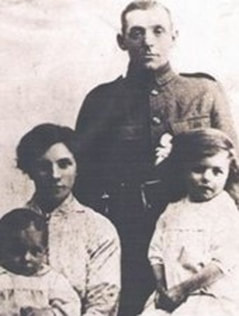
57534 Private
Thomas Hodgson
17th Bn. Northumberland Fusiliers
30th October 1917, aged 25.
Plot III. B. 10.
Picture courtesy of Great granddaughter Judith McMullen and family
Thomas Hodgson
17th Bn. Northumberland Fusiliers
30th October 1917, aged 25.
Plot III. B. 10.
Picture courtesy of Great granddaughter Judith McMullen and family
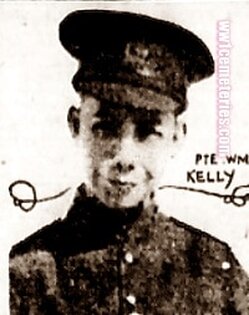
A/22839 Private
William Guy Kelley
8th Bn. Canadian Infantry
14th June 1916, aged 18.
Plot II. J. 28.
Son of Guy and Elizabeth Kelley, of 410, Talbot Avenue, Winnipeg. Born at St. Helens, Lancashire, England.
William Guy Kelley
8th Bn. Canadian Infantry
14th June 1916, aged 18.
Plot II. J. 28.
Son of Guy and Elizabeth Kelley, of 410, Talbot Avenue, Winnipeg. Born at St. Helens, Lancashire, England.
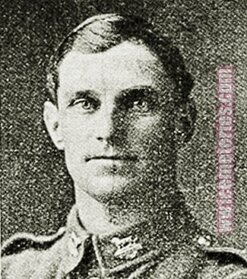
51792 Private
George Edward Tapp
Wellington Regiment, N. Z. E. F.
14th November 1917, aged 29.
Plot II. K. 4.
Son of Stephen and Fanny Tapp, of Springlands, Blenheim, New Zealand.
George Edward Tapp
Wellington Regiment, N. Z. E. F.
14th November 1917, aged 29.
Plot II. K. 4.
Son of Stephen and Fanny Tapp, of Springlands, Blenheim, New Zealand.
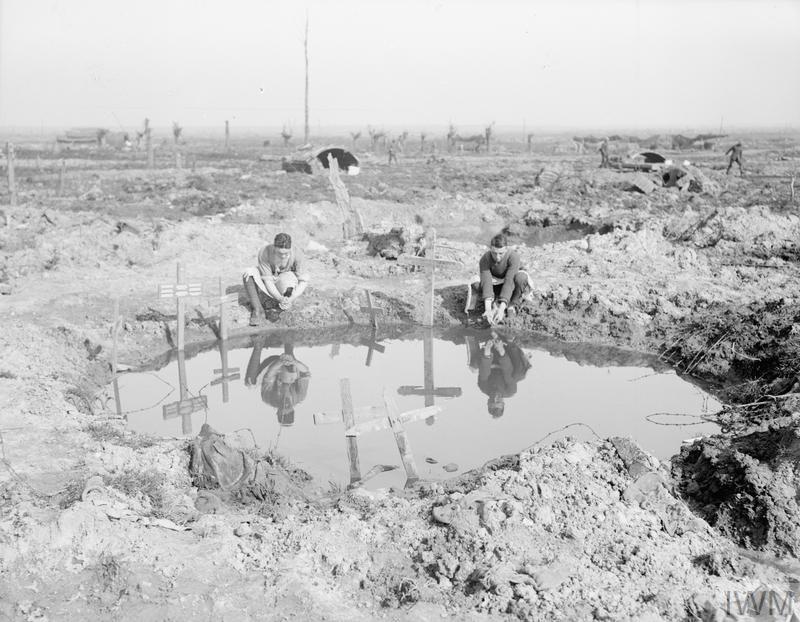
Soldiers washing themeselves on the edge of a water-filled shell crater at St. Julien (29th Division Sector). Note a number of war-grave crosses around it. 13 March 1918.
The cross between two soldiers marks a grave of Sapper Frank Barnard Bush Vickery 496359 of the 475th Field Company RE, killed in action on 16 August 1917 at the age of 31. He was a son of Job and Eliza A. Vickery, of 19, Cheriton Place, Westbury-on-Trym, Bristol; husband of the late Emily Hunt Vickery. After the war, his remains were not identified and he is now commemorated on the Tyne Cot Memorial. © IWM Q 11562

